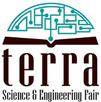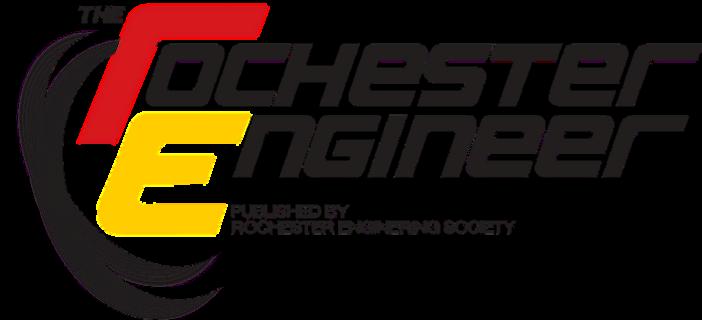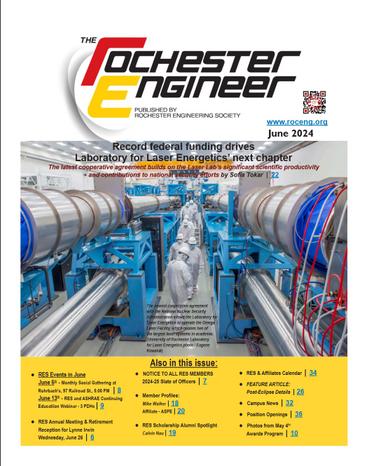
















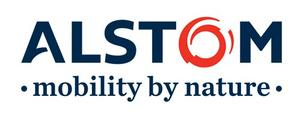



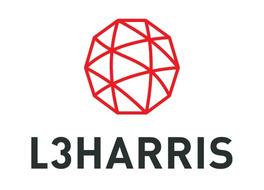























The RES will become the lead organization for improving the image and influence of the engineering community in the greater Rochester area by: Demonstrating a comprehensive knowledge of the region’s engineering and technical capabilities; Providing the best clerical support and public relations assistance to our affiliates; Continually communicating the engineering and technical accomplishments to both the engineering and technical community and the public; Providing regular forums and networking opportunities for the exchange of ideas and discussion of issues; and, Providing programs that identify career opportunities to the region’s youth and develop the skills of the practicing engineer.
The deadline is the 10th day of the month prior to the issue. Unless otherwise stated, opinions expressed in this publication are those of contributors, not of the Rochester Society, Inc.
Advertising information may be obtained by contacting the office of the Rochester Engineering Society or going to the website at www.roceng.org.
Published every month but July. You can purchase individual copies directly from ISSUU. 2,500+ Monthly Circulation (11 issues electronically) ISSN 0035-7405
Go to www.roceng.org to join the Rochester Engineering Society. Click on the individual membership and you can submit your application on-line.
News items and articles are invited. Materials should be submitted to e-mail: therochesterengineer@gmail.com www.roceng.org.
Stay up to date with the Rochester Engineering Society & their affiliates events by going to: https://roceng.org/Calendar

Clicktogobackto tableofcontents






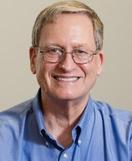
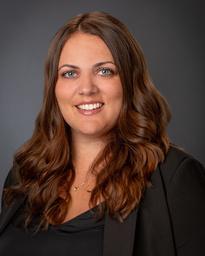
President
DENNIS ROOTE, PE
CDE Engineering & Environment, PLLC
dennis.roote@cde-pllc.com
Treasurer / Imm. Past President
MICHELLE SOMMERMAN, PE
Colliers Engineering
Michelle.Sommerman@collierseng.com
HOWARD RESSEL, PE
Popli Design Group (retired NYSATE) ressel@frontiernet.net
RICHARD E. RICE
Erdman Anthony rricesquash@gmail.com
BRETT ELIASZ, PE Colliers Engineering
Brett.Eliasz@collierseng.com
KENTON G. HINES
Merrill Lynch Kenton.Hines@ml.com
KELLY ROBINSON, PE, PHD
Founder, Electrostatic Answers kelly.robinson@electrostaticanswers.com
JESSIE COCQUYT
Administrative Director
res@frontiernet.net

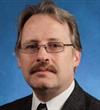





First Vice President
DAWN LaPIETRA
L3Harris Corporation
dawnlapietra@gmail.com
Second Vice President
MIKE KURDZIEL, PhD
L3Harris Corporation
mike.kurdziel@L3harris.com
STEVEN W. DAY, PhD Rochester Institute of Technology swdeme@rit.edu
NOAH KELLY
NAM Products Services Manager, Alstom noah.kelly@alstomgroup.com
JESSICA SHANG, PHD
Associate Professor, University of Rochester j.k.shang@rochester.edu
YVETTE LaBOMBARD, PE
Director Gas Engineering, RG&E
yvette labombard@rge.com
SHEILA RANSBOTTOM, PE
Senior Transportation Engineer, Wendel anumrich@wendelcompanies.com
Welcome Back!

The Dog Days of Summer are winding down. Relaxing by beaches, pools; on patios, porches, and decks. Outdoor activities. Enjoying the wonders and recreational opportunities that a western New York summer brings.
Volume 103, Number 1, August 2024 of the Rochester Engineer is different. Brett Eliaz, a director on the RES Board and chairman of the magazine committee, has worked closely with the staff at the Builders Exchange of Rochester (ROBEX), RES’s new association management partner to bring about newer, updated layout to the Rochester Engineer. Take a good look at the magazine. A fresher, brighter feel. Smart placement of advertising. Visually appealing headlines and titles. Relevant, in-depth information suited for more detailed articles. And Brett and his team are not done yet. This is just the beginning, and not the final “look” of the Rochester Engineer. Starting in September, RES will include a “Letters to the Editor” section. This is an opportunity for you, the engineering community, to tell us what is on your mind, what issues concern you, and what articles/information you want to see. We want to hear from you – not through a survey or phone call, but rather from you on your timeframe about topics that are important to you As always, feel free to contact us with questions, concerns, and suggestions.
Now, a few highlights in this month’s magazine:
• Lee Loomis continues his fascinating series on the history of Rochester engineering as reported by the Rochester Engineering Society. In June 1978, RES approved Richard Rice as President, and Lee Loomis as Second Vice President – 2 people who are still heavily involved in RES.
• We say good-by to Lynne Irwin, RES’s long time administrative director Lynne, you helped many in RES in so many ways and gave us – the RES leadership – the stability we needed to navigate RES through all our highs and lows.
• We introduce Jessie Cocquyt, our new administrative director (appointed by ROBEX). Jessie is an experienced administrator who has extensive involvement with non-profit organizations and experience in the construction sector. Coupled with a host of ideas and enthusiasm for this position, Jessie is a great fit for RES. Welcome!
• In Campus News, U of R celebrates Allison Lopatkin as a PEW Scholar in Biomedical Sciences and reports on undergraduate engineers participating in NASA’s Lunabotics Challenge RIT highlights research in the biomedical engineering field.
• Electrical Engineering Technical Corner, Polymer Concrete Slurry, Bathymetric Surveys, and Nano-Pocket Membranes for Enhanced Particle Filtration round out this month’s technical articles.
As always, if you see anything the magazine that interests you, or have any suggestions, please feel free to contact RES at res@frontiernet.net. Thanks again and enjoy the rest of the summer!
Dennis R. Roote, P.E. President, Rochester Engineering
Society
We had a great annual meeting in June! A time for members to reconnect, take a look back at the past year of RES activities, and look ahead at the upcoming year! Very excited for the new slate of Officers & Directors and our new partnership with Robex!
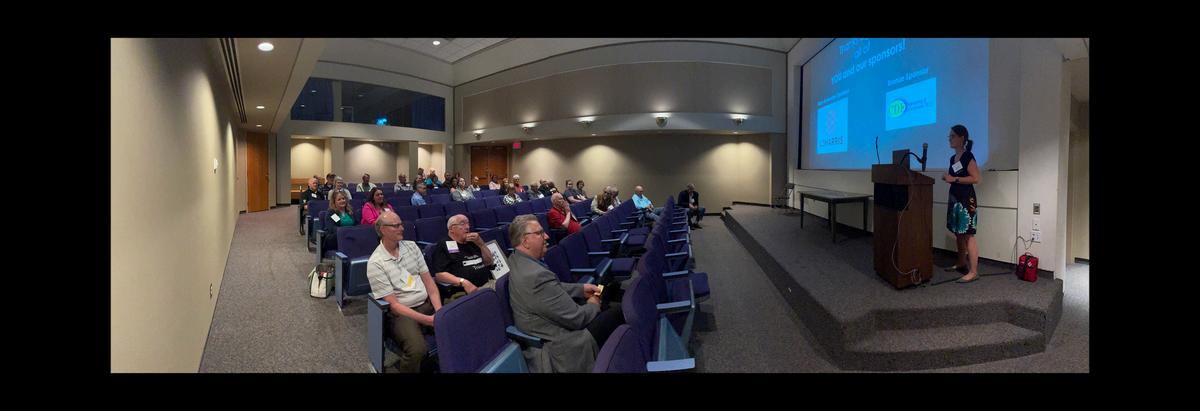
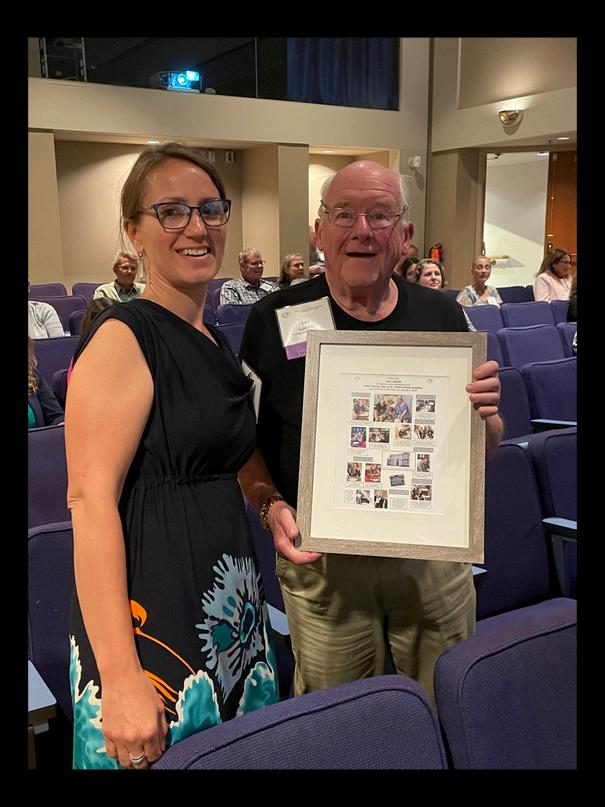
Michelle Sommerman (President) 2022-2024 & Lee Loomis (Tutoring Team Leader 2024-2024)
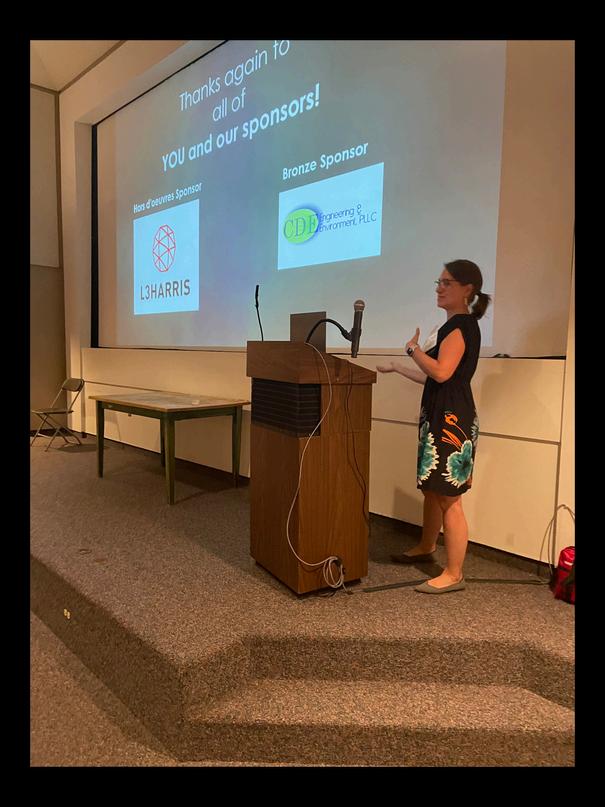
Thanking our sponsors
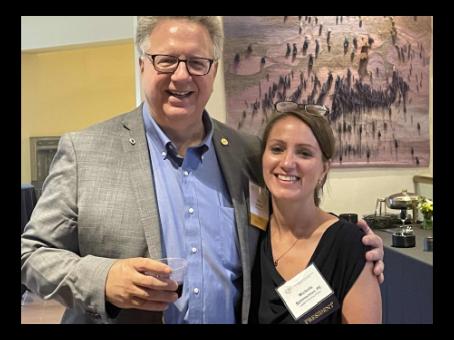
Gdowski (President) 2020-2022 &
Sommerman (President) 2022-2024

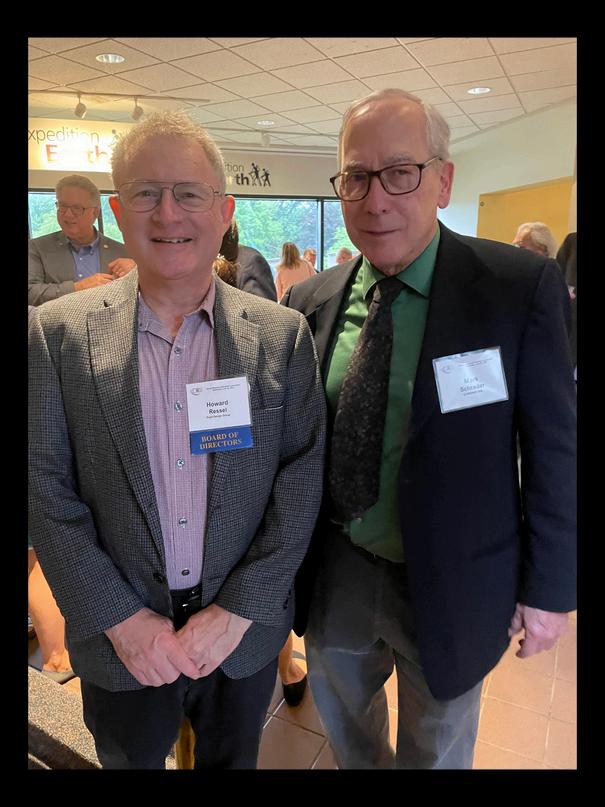
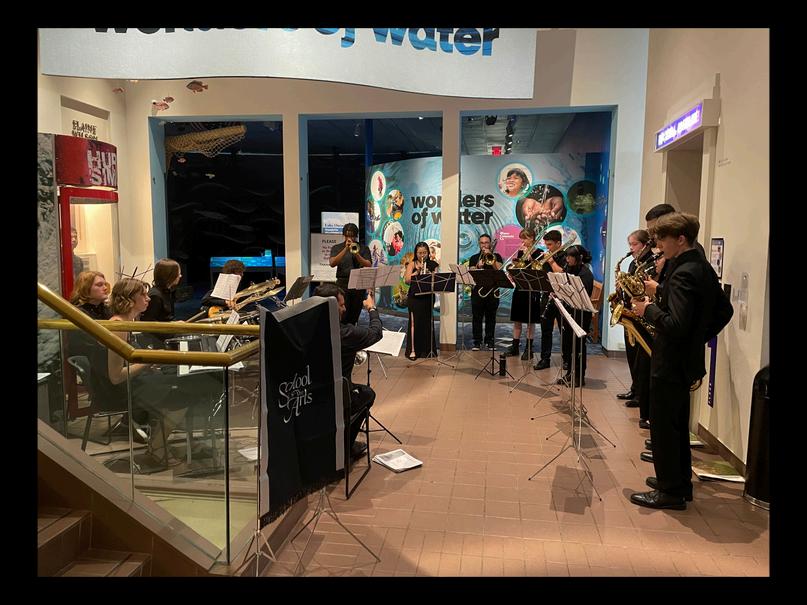
After the Business Meeting...we celebrated Lynne's retirement after 42 years with RES!!! She has gotten to know such a variety of people over her years with RES, I'm sure she has many stories! It was great to recognize her (as she was often in the background just getting things done). As seems to be typical, I hear she is even busier in retirement!

MichelleSommerman&LynneIrwin withaplaquemadebyBODKenton Hines.



Michelle&LynnewithLynne'sfamily inthebackground.


Gift toLynnefromGregGdowski .

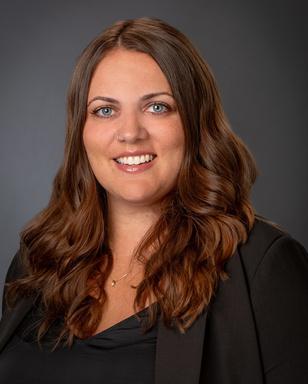
Our new Administrative Director brings a wealth of experience in management, business, and administration.
When RES chose to contract with the Builder’s Exchange of Rochester (ROBEX), Kim Gaylord, the President of ROBEX, gave RES a gift. She designated Jessie Cocquyt, a Rochester native, a graduate of SUNY Brockport, and an experienced administrator, as Rochester Engineering Society’s new administrative director
Jessie joined the Builders Exchange of Rochester in May 2024, bringing over 15 years of administrative experience in construction, retail, and industry associations. While in college, she interned at LeChase Construction and at Barnes & Noble, which led to her first job after graduation as an assistant manager at the college bookstore on the St. John Fisher College From there, she worked for DDS Companies, which brought her back into the construction industry She then worked for Victor Excavating and Villager Construction prior to joining the staff at ROBEX She has been involved with Junior Builder’s Exchange where she was the Executive Board secretary.
Jessie has a strong passion for community service, fueled by the example of her father, who volunteers and is heavily involved with the Al Sigl. She accompanied him on various events and volunteering opportunities. One opportunity was Sit-Ski, an adaptive ski system where people of all ages with mobility issues are able to enjoy the sport of skiing Upon experiencing the positive impact it had on people’s lives, Jessie was hooked and knew she had to be a part of Al Sigl Center. Her passion for helping others led to her involvement in the Cystic Fibrosis Foundation. Her involvement with the Cystic Fibrosis Foundation led her into the Cystic Fibrosis Finest program, a leadership training and fundraising program in which participants pair up with a family experiencing CF. While there, she met an 18-year-old with CF, an experience that further sharpened her passion for community service The young man is now an adult, working in medical sales It is no surprise that Jessie’s philosophy for life is, “Be Kind. It's a lot harder to be mean.”
With her extensive experience in construction and nonprofits, Jessie brings fresh eyes, fresh ideas, and the enthusiasm that goes along with them. In her office hangs a sign that states: “The most damaging phrase in the language is ‘We’ve always done it this way.’”
She sees the ROBEX/RES relationship as a long-term partnership and has stated: “I'm really excited to see where it (RES) is in a year from now.”
At the core, Jessie has a desire to help people become a bigger part of something – be it the construction industry, the non-profit arena, or the engineering community Her eagerness to share her ideas and experiences with the Rochester Engineering Society includes a life lesson about rushing things too quickly. She wishes that “...current me could’ve had more consideration for future me . ”
When Jessie is not helping RES achieve its potential, she enjoys traveling and reading Elin Hilderbrand romance novels; an ideal vacation would be at an all-inclusive beach resort with a cocktail and a book on the beach.
As RES steers into the future, we can count on Jessie and the ROBEX team to provide support that includes the experience, advice, and passion needed to help RES grow and serve Rochester’s engineering community well into the future.

Beginning in September The Rochester Engineer will start to feature a Letter’s to the Editor section. Do you have something you would like to ask our editor? Do you have questions about RES? Do you have questions about local Engineering Firms? Send your letters to res@frontiernet.net to be included in next months magazine.


The purpose of this article is to help avoid the common service design error that we often see even after the phase conductors have been properly sized. Namely, what does each filled conduit need to include and what should it not include?
In the June 2024 article, we established that two parallel sets of #500 kcmil are sufficient to feed an 800A service. This assumes 75C lugs (a good assumption for new installations) and copper conductors. In each of the two utilized conduits in our 3-phase, 4-wire, 800A service, make sure to specify a total of four 500 kcmil copper conductors: one for each of the three phases (the ungrounded service conductors) and one grounded service conductor. The grounded service conductor carries the unbalanced current and the ground fault currents back to the utility transformer, and it is always correct to size it equal to the ungrounded service conductors.
Do not include a fifth conductor in the service conduits. If we incorrectly call out a 5-wire, 800A equipment feeder between the utility transformer and the service board, we are asking the contractor to provide two differently sized grounded conductors in parallel to carry the sum of the unbalanced and ground fault currents back to the source, which is a violation of NEC 310.10(G)(2)(3), a potentially dangerous condition, extra copper, and completely unnecessary.
Do not confuse service feeders with equipment feeders, since they have different requirements. If we incorrectly specify a 4-wire, 800A equipment feeder between the utility transformer and the service board, the grounded conductor will be undersized in this example, because grounded conductors and equipment grounding conductors are defined in separate NEC Tables 250 102(C)(1) and 250 122, respectively Instead, please specify four equally-sized conductors in each service conduit
Reference Material: NEC 2020 and real-life, third-party single line diagrams
Feel free to provide any comments and follow-up questions to me at bpeters@cscos.com Thank you for reading!

Bart Peters, PE, LEED AP Senior Project Engineer C&S Engineers,
Inc.


Brett

Hopefully this article finds you well and can be used as a reference for your project needs If anyone would like to contribute to the RES magazine and add an article or would like to request information on a specific topic (not limited to Electrical) just email me at Brett.Eliasz@collierseng.com. As always, any comments are appreciated…! Thank you for reading

ByLeeM.Loomis
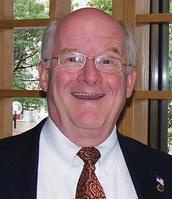
Continuing with the historical sampling of the earlier writings on behalf of the Rochester Engineering Society, the years following "The Great War", into and through the “Great Depression”, continued to be a time of reaching out for the maturing Society, both locally and nationally The meeting minutes describe a series of technical discussions and presentations intended to broaden the technical horizons of the membership (especially the CE's, ME's and EE's). The RES affiliated itself with a number of National technical societies, adopted local Affiliated Societies, frequently held joint meetings with them and continued taking action on a growing list of public matters Certain issues of standardization, some crucial to public safety, became the responsibility of the RES and its affiliates. In the pervasive economic downturn of the “Great Depression”, the magazine offered classified advertising for unemployed engineers, technicians and draftsmen and took other steps to try to deal with the crisis Still, it continued its effort to shape the function, focus and infrastructure of the City of Rochester, and beyond World War, again affected the Society, taking away many of its leaders while providing opportunities for others to step forward to fill these vacancies. In an effort to provide even greater perspective on the happenings and concerns of the day, a synopsis, featuring selected items from "The Rochester Engineer" has become an integral part of this series The Second World War, the Korean Conflict, and the Vietnam War are now history. These experiences have changed the face of and will, no doubt, influence the future of the community. The Rochester municipal leadership and the industrial community have become immersed in the coldwar, growth economy
“The Rochester Engineer” (May 1978) (continued) In his article, “Highways: Which Way to the Future”, Federal Highway Administrator (U.S. DOT), William M. Cox, describes some of the challenges to completing the final 10% of the Federal highway system At the end of a twenty-year program that had completed the first 90%, these included completing the vast array of corridor connectors, re-focusing on proper methods of roadway maintenance, and developing new sources of roadway pavement materials All of this would have to happen under the new, stricter Interstate Highway Standards developed by Congress. In particular, this included the requirement that ALL Interstate Highways must be four-lane roadways He explained that the greatest challenge would be the growing concern for the environment, and that this would result in a more careful taking of public land for any public works reason, and the recycling of roadway waste into reusable asphaltic materials As he explained, “The byword for the future will be conservation: conservation of money, energy and materials.” He went on to describe a recent new experiment involving “hot-mix” recycling of four inches of asphalt pavement on a one-mile segment of Interstate Route 15, near Las Vegas, NV.
He also described other experiments utilizing incinerator residue, and old asphaltic concrete, in roadway aggregates. He estimated that reusing some 50 million tons of old concrete could save 700 million gallons of liquid asphalt, 30 million tons of well-graded crushed aggregates and 17 million tons of sand, annually. The Rochester Section of IEEE





announced that the theme presentation, by Dr Portia Isaacson of the Micro-Store in Richardson, TX, its annual dinner would be “Personal Computing”, and that the door prize, that evening, would be a personal computer.
The New York State Police announced that their recent, seven-county, Central-New York, study involving some 6,000 citizens-band (CB) radio operators, resulted in over 30,000 reports of traffic accidents and potential crime activity. The stated objective of the study was to evaluate the potential effectiveness of a CB link between State Police and the motoring public During the test period, the motoring public had been invited into a network, linking them to 150 CBequipped State Police cars
June 2, 1978 (RES Annual Meeting, University Club) The following slate of RES Officers was presented to/approved by the Society’s Membership: President – Richard E. Rice, 1st Vice President – George Landberg, 2nd Vice President, Lee M. Loomis, Treasurer – Daniel Turner, Directors: James Sterlace (1yr), James Row (2yrs), Virender Saigal (3yrs), Richard Van Meter (4yrs) Continuing in office as RES Directors will be Douglas M. Marshall (’79) and Peter C. Oppelt (’80). President John M. Robertson then handed the gavel to in-coming President, Dick Rice. President Rice then presented an inscribed plaque to Past-President Robertson, “For his dedicated guidance and leadership in furthering the goals of the Society” The speaker for the evening, Dr Robert Johnston, Dean of the College of Fine and Applied Arts, RIT, gave a presentation on his recent trip to China The evening continued with dancing to “The Flotillas”.
“The Rochester Engineer” (June 1978) Editor’s Note: June 9, 1778, is the date on which General George Washington issued a general order creating a “School of Sappers”, as a School of Engineering within the Continental Army. While this has been but a footnote in American history, is has been seen, by engineering scholars, as an act by Washington recognizing the importance of engineering education to meet the needs of an independent and sovereign nation.
From this act, engineering education in the United States has grown to the point where, by its two hundredth anniversary (1978), there were nearly 300,000 graduate and undergraduate students studying engineering on a full-time basis, and an additional 50,000 students studying part-time at 289 institutions of engineering. In his book, “The Making of an Engineer”, author Lawrence P. Grayson (1839-1916), describes the origins of engineering education in American in the context of the circumstances in the Continental Army of 1778 The lack of a sufficient number of engineers in the army persisted throughout the Revolutionary War. Almost all of those who served under George Washington as engineering officers were of foreign birth and education It was recognized that most of these men would return to their native countries when the war ended. American required engineers, not only for the immediate military needs, but also to meet the future requirements of a civilian population, when the nation would be independent and developing Such were the conditions and sentiments of the times when the army established winter quarters at Valley Forge, PA, in December of 1777 While the primary focus of the U S Military Academy at West Point, established in 1794, was engineering (mainly of military fortifications), it wouldn’t be until 1818, when Acting Superintendent of West Point, Alden Partridge, the first person to actually hold the title of Professor of Engineering, resigned He soon established the American Literary, Scientific and Military Academy at Norwich, VT, later to become Norwich University. Established in 1824, the Renesselaer School, now Renesselaer Polytechnic Institute RPI), in Troy, NY, would eventually





(in 1835) grant the degree of Civil Engineer, for the first time ever, in America.
Subsequent articles in this series will describe the RES' continuing outreach to other technical societies as it considered its role in this and the larger community. It will feature more of the activities of the RES as it moved to be of greater service to its membership, as the Society adopted a greater role in shaping the future of the City and its environs. Noted also, will be the contributions made by RES members in the struggle to meet the challenges coming out of World War II, the Korean Conflict and the Vietnam War, as well as a hoped-for period of post-war growth and prosperity These articles will also feature an impressive array of RES activities in support of post-war re-emergence of Rochester area industry, and the continuing prosperity of the second-half of the 20th Century
We welcome your questions and comments on this series.





PhilipJ.Welch SeniorVicePresidentInvestments
400MeridianCentre,Suite210 Rochester,NY14618Direct:585-2417546Fax:585-241-3986 philip. J.welch@wellsfargoadvisors.com Wells Fargo Advisors
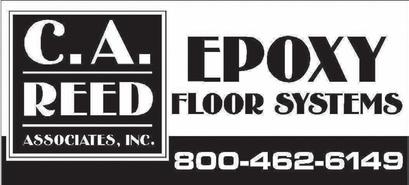
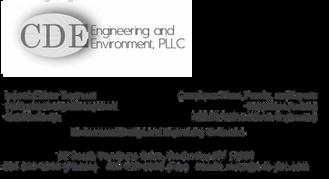

Solvingsoilsproblemsforover 40years 46ASagerDrive,Rochester,NY14607Tel: 585-458-0824•Fax:585-458-3323 www foundationdesignpc com
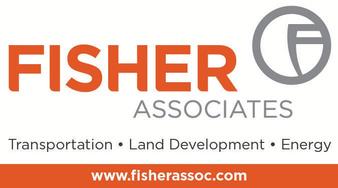
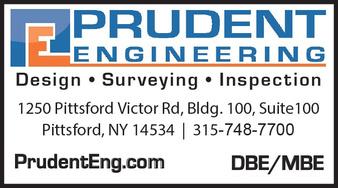

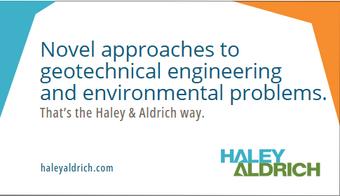

The Rochester Engineering Society appreciates our affiliates which are the backbone of our organization. Most professional engineering organizations offer networking, technical guidance, access to references and standards and much more Many are affiliated with a national organization that provides services to its members and supports the greater benefit of the profession and of their specialty. Some organizations even set national and international standards.
We hope you find this occasional series helpful and informative. Feel free to check out the affiliates local and/or national web sites for more information.
The Rochester Plant Engineers is a not-for-profit group which was formed to give people the networking power to build Facilities personnel and Facilities support communities bringing the Rochester and the surrounding areas closer together. Through our networking group, plant tours, learning new innovative solutions problem solving and offering scholarships to local college students, we plan to drive the importance of Facilities to younger generations.

Promoting technical innovation and ingenuity for operating and maintaining sustainable facilities across our Greater Rochester community through education and networking
The Rochester Chapter was established in 1996
Major activities of the local affiliate
Training/education
Plant tours
Golf event
Clam bake
Holiday happy hour
Governance
Local Board of Directors

With the impending closure of Dr. Walter Cooper Academy by the Rochester City School District, at the end of this school year, it’s time to reflect upon the history and accomplishments of Dr. Walter Cooper…
Dr. Walter Cooper has been an advocate for the education of children, all of his life. As a two-term Regent for the State of New York, he served as Chair of the Elementary, Middle, and Secondary Education Committee. He also served on subcommittees on Quality, State Aid and Low Performing Schools. He also was selected to serve as the New York State representative to the Interstate Migrant Education Council.
From an early age Dr. Cooper realized the importance of education, which led him to earn his Doctorate in Physical Chemistry from the University of Rochester. He was the first African-American to receive a PhD in Chemistry from the University of Rochester. He went on to a successful career at Eastman Kodak Company, earning three US Patents.
The Rochester Community has also benefitted from Dr. Cooper’s knowledge, insight and compassion. He is a founding member of Rochester’s Urban League and of Action for a Better Community. He was also Associate Director of the Rochester-Monros County Anti-Poverty Program.
At the June 21st, final “Rights of Achievement Day” at #10 School, Dr. Walter Cooper witnessed the entire student body’s celebration of him and the legacy he leaves with these “Cooper Scholars”.
In his parting remarks that morning, he emphasized, “Each of you has a choice, the classroom or the street….be sure to choose wisely!”
With the closing of Dr. Walter Cooper Academy (RCSD School #10), our “Cooper Scholars” have been dispersed throughout the RCSD, to schools of their parents’ choosing. The facility at 353 Congress Ave. will be renamed the “Dr. Walter Cooper Campus”, and another RCSD elementary school (RCSD School #53), with a unique Montessori-Learning protocol, will be placed there. For now, the future of the RES Tutoring Team is uncertain, and therefore doubtful.
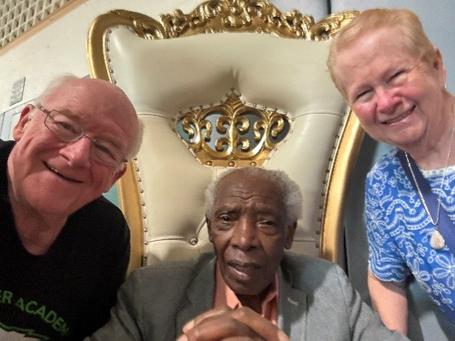
It was Marci’s and my pleasure to be with Dr. Cooper as he gave his farewell address to his Cooper Scholars

Luke Auburn June 18, 2024
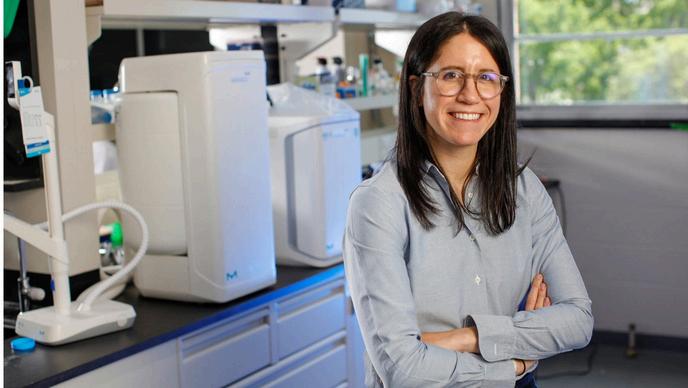
Lopatkin is one of 22 early-career scientists selected nationwide to explore some of the most pressing questions in human health and medicine.
AllisonLopatkin’13,anassistantprofessorofchemicalengineering,biomedicalengineering,andmicrobiologyand immunologyattheUniversityofRochester,isoneof22scientistsselectedtojointhePewScholarsProgramintheBiomedical Sciencesthisyear.Theprogramprovidesearly-careerscientistsfouryearsoffundingtoexploresomeofthemostpressing questionsinhumanhealthandmedicine.
ThefundingwillhelpLopatkin’slabexplorehowchangesinbacterialmetabolismcontributetothedevelopmentofantibiotic resistance.Shesaysthatdecadesofantibioticoveruse inbothclinicalandagriculturalsettings haveledtoanalarmingrise inbacterialstrainsthatareresistanttoantibiotics,contributingtoamajorpublichealthconcern.
“Currently,thestudyofantibioticresistancemechanismsfocusesmostlyonasmallhandfulofhighlyconservedintracellular targetsthatreduceantibiotic-targetbinding,”saysLopatkin.“However,asapostdoctoralfellow,Idiscoveredthatmany bacteriacanalsoescapetheeffectsofthesedrugsbyamassingwidelydiversemutationsthatinterferewiththeir metabolism.”
Usingasuiteofsophisticatedtoolsintegratingmicrobiology,biochemistry,andquantitativeandcomputationalbiology techniques,Lopatkin’slabwillidentifythedrug-resistancemutationsthatariseinbacteriaastheyadapttocombinationsof differentantibioticsandmetabolism-alteringchemicals.
“Theseinsightswillallowustodeterminehowmicrobialmetabolismcontributestothedevelopmentofantibioticresistance inreal-worldclinicalcontexts,”saysLopatkin.“Thisworkwillfacilitatethedevelopmentofimproveddiagnosticand prognostictestsforassessingantibioticsusceptibility,aswellasnovelclassesofinfection-fightingdrugs.”
Lopatkinjoinsacommunityofmorethan1,000scientistswhohavereceivedawardsfromPewsince1985.Shewaschosen from198applicantsnominatedbyleadingacademicinstitutionsandresearchersacrosstheUnitedStates PriortoLopatkin,theUniversity’smostrecentPewScholarinBiologicalScienceswereEdwardBrown(2007),associate professorofbiomedicalengineeringandneuroscience,andLauraCalvi(2005),theSKAWAFoundation’sProfessorof MedicineintheDivisionofEndocrinologyandMetabolismandViceChairforBasic&TranslationalSciencefortheDepartment ofMedicine.
Foracompletelistofthisyear’sscholars,gotothePewCharitableTrustswebsite.

Jim Mandelaro | Communications Officer, the College and Student Life
July 1, 2024
Rochester undergraduates gained crucial systems engineering experience constructing a lunar rover for NASA’s Lunabotics Challenge.
MelbotV3standsjusttwoandahalffeettallandismade primarilyofaluminumandplastic,heldtogetherwith nutsandbolts.Itcansuccessfullycompleteitstarget tasks:todrive,dig,anddeposit
ThesilverminirobotwasbuiltinRettnerHallontheRiver Campusbyabout20UniversityofRochesterengineering majorswhoaremembersofthestudentorganizationUR Robotics.
“Melbotwasatotalteameffort,”saysAlexSaunders’25, amechanicalengineeringmajorfromCalais,Vermont “We’reveryproudofourrobot.”
ThestudentsbegandesigningMelbotV3lastSeptember foranannualspringcompetitioncalledtheLunabotics Challenge,auniversity-based,yearlongeventrunand sponsoredbyNASA Robotsaretaskedwithdriving, digging,anddepositingregolith thefragmentedrock materialthatcoversthemoon’ssurface inalunar simulantattheUniversityofCentralFlorida(UCF)in Orlando.
TheRochesterstudentsfinished19thofthe43teams invitedtoshowcasetheirroboticrovers Tenfinalists madetheshorttriptotheKennedySpaceCenterforthe two-dayfinalround,withIowaStateUniversityandthe UniversityofAlabamatyingforfirst.
Lunaboticsisinits15thyear,andRochesterjoinedin 2022 The“V3”inMelbot’snameisanodtothethird yearofcompetitionfortheteam.
“Thefirstyearwasalotofgrowingpains,learningwhatit wasliketomakeabudget,keeptoaschedule,puta robottogether,andbringitdowntoFlorida,”says ThomasHoward,anassociateprofessorinthe DepartmentofElectricalandComputerEngineeringand theURRoboticsadvisor.

“Last year was a virtual competition that involved a local demonstration of digging capabilities. This was the first year our students completed all three tasks, driving, digging, and depositing, at a formal competition.”
Students say that combining the lessons learned in their engineering classes with real-life engineering challenges was invaluable. Howard teaches a course on mechatronics each year along with a rotating schedule of advanced electives that concern different aspects of autonomous robots.
“The most useful direct learning comes from Professor Howard’s robotics courses,” says Saunders, who was the team captain and design lead. “But the main takeaway is developing team skills and ways of approaching an engineering problem.”


Jim Mandelaro | Communications Officer, the College and Student Life
July
1, 2024
BylateMarchofthe2023–24academicyear,the studentshaddesignedandbuiltMelbotV3usingthe basicsystemengineeringprinciplesoutlinedbyNASA “Weworkedhardgoingfromconceptualideasto designinginCAD(computer-aideddesign)and manufacturingourrobot,”saysBridgitNguyen’26,a mechanicalengineeringmajorfromHoChiMinhCity, Vietnam “Wewereconstantlytroubleshooting Itwas stressfulbutsatisfyingtofinallyfigureitout.”
Saundersestimateshespentabout300hoursonthe project everythingfromadministrativetasks,CADwork, designreviews,machining,assembling,testing, outreach,andwritingtomeetalltherequirementsforthe competition.”
“It’sthemostcomplexproblem,engineeringor otherwise,I’veworkedonandittrulyrequireda multidisciplinaryapproach,”Saunderssays “Ifthe mechanical,electrical,orsoftwaresidesaren’tworking together,wewon’tgetanywhere.”
Thecomplextechnologicalchallengesofafully autonomousrobotrequiredbreakingtheprojectinto multipletasks,assigningeachtasktoasub-team,and thencoordinatingacrosssub-teams.
“Buildingafunctionalrobotasastand-alonetaskcanbe easy,butwhencoupledwithlimitedphysical requirements,budget,committedtimetotheproject, andmanufacturingoptions,thechallengebecomesten timesharder,”saysHeshamElshafey’25,anelectrical andcomputerengineeringmajorfromTanta,Egypt. “Andthat’swhatisgreataboutit!” Unexpectedissuesmadeforinnovativesolutions “DownatUCF,wedidn’tbringthedustcoverwehad madeforourelectricbox,”Nguyensays,“sowe improvisedonefromatableclothandusedtheleftover clothtomakesurethewashers whichweren’tthe perfectsize weresecuredonourdrivetrain’sshafts.”
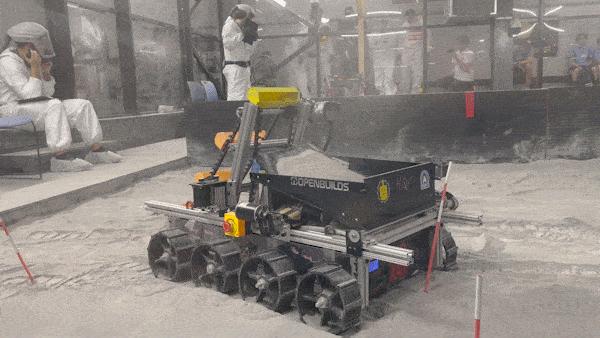
Experiential learning was biggest prize for students
Experiential learning is a hallmark of an undergraduate education at Rochester, with many engineering students participating in senior design projects. Yet such immersive opportunities are not limited just to graduating seniors.
“One of the things our students ask for year after year is more engineering and design opportunities,” Howard says. “UR Robotics club gives students an opportunity to do this every academic year.”
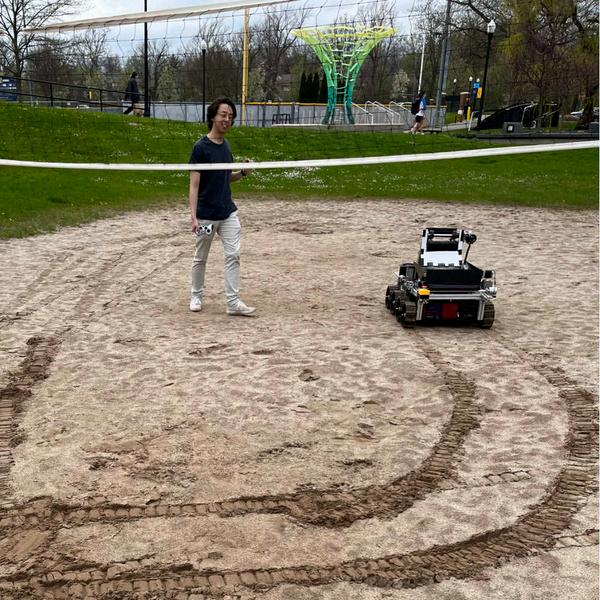

Jim Mandelaro | Communications Officer, the College and Student Life
July
1, 2024
HisashiLonske’25,amechanicalengineeringmajorfrom Boston,joinedtheURRoboticsclublookingforatangible projectthatrevolvedarounddesignandproblemsolving. “IgotexactlywhatIwaslookingfor,”Lonskesays.
“WhileIwasabletoapplythemathandconceptsI learnedinclasstothecreationoftherobot,theproblemsolvingandcriticalthinkingelementsarethecoreofthe Lunaboticsproject.”
Mostofallwasthejoyofbeingpartofateamworking withacommonpurpose.
“Eventhoughtheclubwassplitintosub-teamstowork onvariouspartsoftherobot,thosesub-teamswould frequentlytalkwithmembersofothersub-teamsto bounceideasoffeachother,”Lonskesays.“The experienceofcollaboratinginateamsettingtoachievea singlegoalisparticularlyimportantforusfuture engineers Thesekindsofexperiencesawaitusen massebeyondourtimeatRochester.”
JoshChoi’25,anelectricalandcomputerengineering majorfromLongIsland,performedmuchofthe electronics,control,andsoftwareworkfortheproject. Hesaysthechallengesandsleeplessnightswereworth it.
“It’sundoubtedlythehighlightofmytimeatRochester,” hesays.“Havingtheopportunitytobuildafully functioningrobotfromscratchwhileworkingalongside ourteamofawesomeengineerswasaninvaluable experienceI’llalwayscarrywithmeandwillbecrucialin mycareergoingforward.”
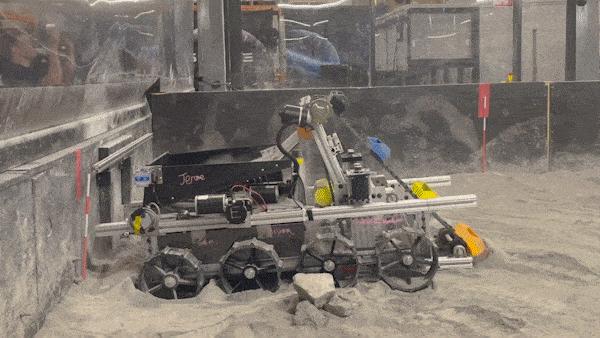
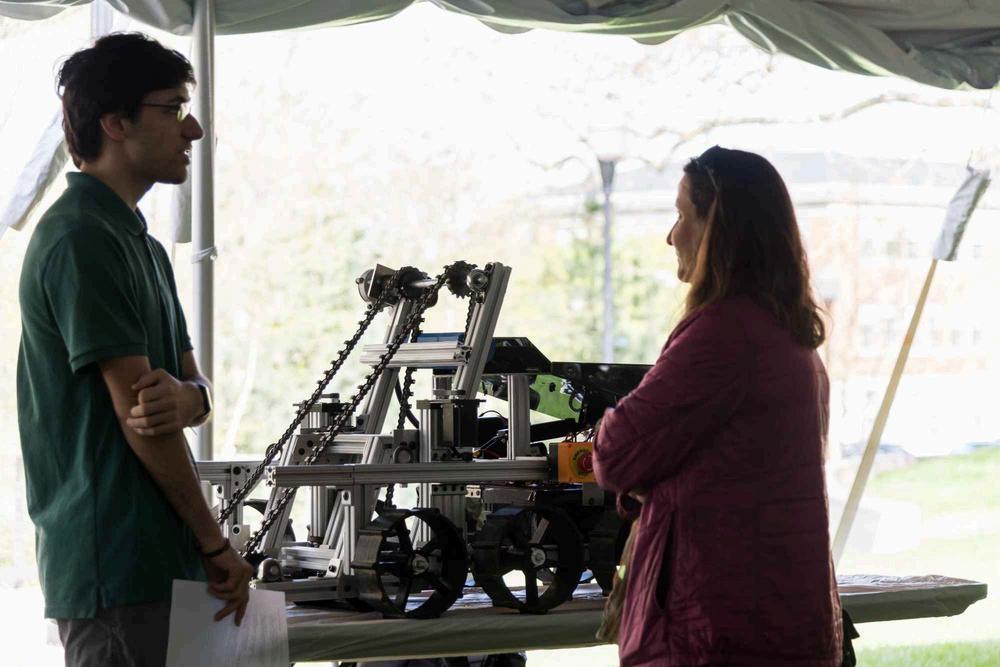


Data-driven platform being developed is needed to assess, guide and offer better visualizations of tissue response to thermal therapies
Michelle Cometa, Sr News Specialist at Rochester Institute of Technology

RIT biomedical engineering
professor Cristian Linte Credit: RIT
Photography
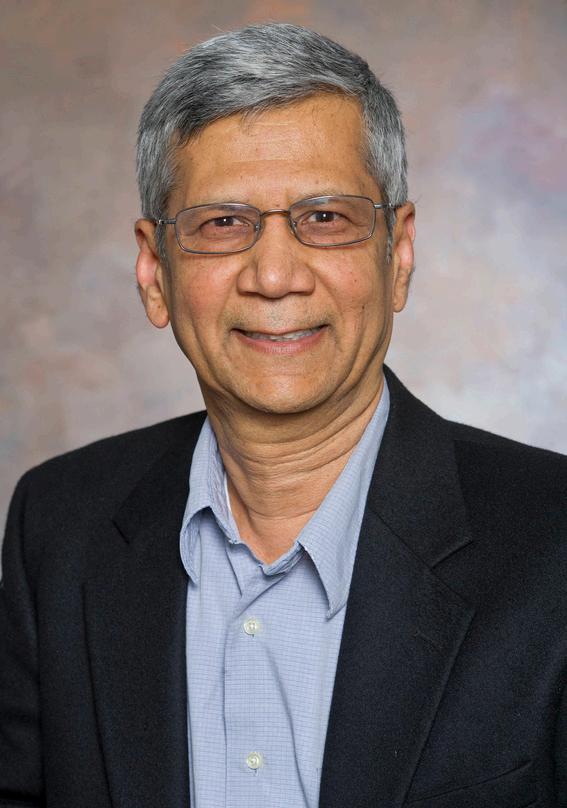
RIT mechanical engineering
professor Satish Kandlikar Credit: RIT
Photography
ResearchersatRochesterInstituteofTechnologyaredevelopingnon-invasive technologythatwillbetterassesscardiactissueresponsetothermalenergy,acommon therapyapproachforbothcancerandcardiacarrhythmiatreatments.
CristianLinte,aprofessorofbiomedicalengineering,isleadingacross-disciplinaryteam thatwasrecentlyawardedNationalScienceFoundationCollaborativeResearchfunding tofurtherdevelopaninteractive,computingplatformtocharacterizeandmonitor thermalcardiactissueablationtherapy.
Ablationisamedicaltechniqueusingheat,extremecold,orchemicalinterventionsto destroyabnormallyfunctioning,diseasedtissues.Whileeffective,understandinghow ablationaffectshealthysurroundingtissuehashadlimitedstudy
“Understandingthermaleffectsonbiologicaltissuesiscrucialformanybiological applications,includingthermaltherapiesaimedatdestroyingpathologicalcellswhile preservingsurroundinghealthytissue.However,therearenofeasiblemeanstomonitor tissueresponsetothermalenergytocharacterizeandvisualizeablationpatternsto ensurereversibleinjuryandavoidincompleteablation,”saidLinte,anexpertinmedical imagingandimage-guidedtechnologiesinRIT’sKateGleasonCollegeofEngineering
Modern,minimallyinvasiveablativetreatmentsforsomecancersorheartrhythm disordersrelyontheuseofheatdeliveredtotissueintheformofradiofrequencyenergy todestroyacanceroustumorordiseasedtissueintheheartthatcausesrhythm abnormalities.Theprocessblocksirregularheartsignalsandisameanstorestore standardheartbeatpatterns.Ablationprovidesaneffectiveandlessinvasiveoption,but asmanyas50percentofablationpatientsexperiencediseaserecurrencedueto incompletetissueablation,Linteexplained.
“Successfultreatmentrequirescontinuousablationpatternsthatinducepermanent thermaldamagetothetissue.However,temperaturemeasurementsinsidetheheartare invasiveandunfeasible,”hesaid.“Unfortunately,routinemedicalimagingprovidesno quantitativeappraisaloftheinducedthermaldamage.Traditionalcomputationaltools usedtostudyablationareprohibitiveforintra-operativeuse Therearenoeffective meanstoquantifyheattransferinbiologicaltissuetointeractivelycharacterizeand visualizethermalablationlesions.”
Aspartoftheresearchteam,LintewillbejoinedbySatishKandlikar,RITprofessorof mechanicalengineering,andSuzanneShontz,professorofelectricalengineeringand computerscienceattheUniversityofKansas,expertsinheattransferandcomputational bioengineeringrespectively

Data-driven platform being developed is needed to assess, guide and offer better visualizations of tissue response to thermal therapies
Michelle Cometa, Sr. News Specialist at Rochester Institute of Technology
Combiningacross-disciplinaryapproach,theteamwill exploreheattransfertheory,imagecomputingand visualization,biomedicalmodelingandsimulationtobuild, modelandquantifytissueresponsetothermalenergy.
“Experimentalvalidationisessentialtoconfirmanalytical andnumericalmodels,especiallyinbiologicalsystems,” saidKandlikarwholeadsRIT’sThermalAnalysisand MicrofluidicsLab Hewillfocusonthepropagationof thermalenergyandprovideatemperaturemapoftissue duringtheablationprocessinsimulatedtissuematerial thatmimicsbiologicaltissueatthecardiacwall.The experimentaldatawillbeusedtofurtherrefinethe modelsdevelopedduringthisstudy.

RITengineeringresearchersarestudyingtheeffectsofthermal ablationtherapyoncardiactissuetoimprovearrhythmia treatments Credit:RITPhotography
“Since knowledge of tissue temperature distribution is critical to accurately predict thermal effects, computationally efficient models that integrate engineering heat transport mechanisms alongside tissue pathophysiology are needed to quantify thermal energy effects on tissues and interactively characterize, visualize, and monitor induced thermal injury,” said Shontz, who also serves as the University of Kansas associate dean of research
Shontz and Linte have collaborated on an earlier diagnostic project, also funded by the NSF, and similar in its development of computing and engineering models to appraise biomechanical heart functions.
This current project is already contributing new knowledge in scientific computing, engineering, and physiological modeling by helping to characterize thermal injury delivered to heart tissue during therapy.
“This research has the potential to reshape biological, engineering and material science applications that involve heat transfer modeling and heat flow characterization by enabling, for the first time, intra-operative, quantitative monitoring of heat transfer and thermal effects,” said Linte.

Use of AI and improved sensor technology could better identify implanted device state-of health
ResearchersatRochesterInstituteofTechnologyaredeveloping technologythatwillbeabletodeterminethelifespanofaheartvalvewith moreprecision.
“It’salmostlikeacheckenginelightonyourcar,”saidJasonKolodziej,an associateprofessorofmechanicalengineering.Kolodziejrecentlyreceiveda NationalInstitutesofHealthgranttodevelopanon-invasivemonitorto evaluatethestateofhealthofventricularassistdevices(VADs),lifesaving heartpumpsusedtomaintainheartfunctionforindividualslivingwithheart failure.Thesepumpscanextendsurvivalformanyyears.
Thethree-yearprojectconsistsofamultidisciplinaryteamofcardiology, computerscience,andengineeringexperts.Theyareworkingtoward developinganadvancedstethoscopeequippedwithmoresophisticated sensorsanddiagnostictoolsthatcanusemachinelearningtobothassess VADperformanceaswellasactasanindicatorforapatient’shealth.VADs aremostcommonlyimplantedintheleftventricularareaoftheheartto assistwithbloodflow.Itwasdevelopedasa“bridge”forpatientsawaiting hearttransplants,thoughmanyreceiveaVADaslifelongtherapy.
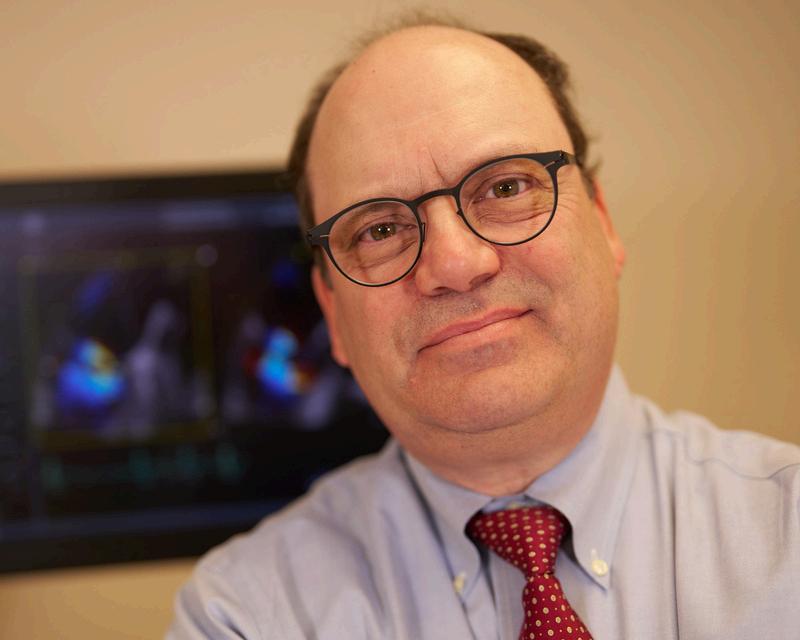
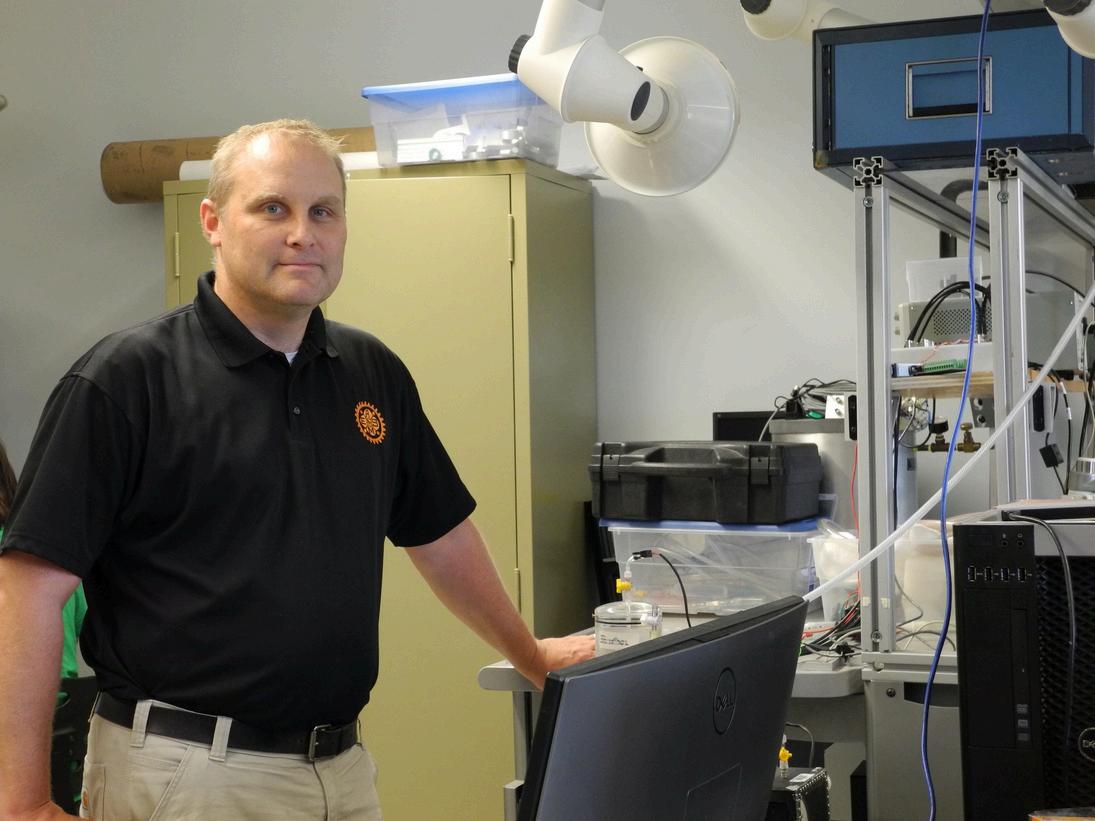
“The devices have become so good that they don’t just use them to keep patients alive until the heart transplant which could be days, weeks, months to the point where I think they may use just the VAD as their treatment,” said Kolodziej “Now you have this device, a mechanical pump, that is inside the heart for a longer amount of time.”
PatientslivingwithVADshavefrequentcheck-upsandtestingto ensuretheVADandheartarefunctioningproperly.Ifheart healthisdeclining,itmayrequireinvasiveproceduresto determineifthesymptomsmightbeduetoreducedpump performance.
Theteam’ssolutionistouseadvancedsignalprocessing technologieswithmachinelearningtoclassifythehealthstatus ofboththepatientandtheVAD.Theywillalsobuildintothe systemdataanalysisprocesses,specificallyforwardpredictions applications,toanticipatetheneedforearlyinterventions.

Use of AI and improved sensor technology could better identify implanted device state-of health
“Thedeviceisgoingtobeprocessingandtakingin measurements,dataofthehealthconditionofthepatient,and thentrainingthesystemthroughmachinelearningonforward predictionsthatcanprovideindicatorssuchaspumpcapacity, graftocclusions,orotherconditions,”saidKolodziej.
KolodziejisworkingwithStevenDay,professorofbiomedical engineeringinRIT’sKateGleasonCollegeofEngineeringand LinweiWang,professorofcomputingandinformationsciences intheuniversity’sGolisanoCollegeofComputingand InformationSciences AllareassociatesinRIT’sPersonalized HealthCareTechnologysignatureresearcharea;Wangis directoroftheinitiative.KarlSchwarz,cardiologistinthe DepartmentofMedicine,professor,andresearcheratthe UniversityofRochesterMedicalCenter,hasbeenalongtime partnerandcollaboratorwiththegroup,leadingresearchonthe integrationofhealthcareandtechnology.
Theteamhasstartedtestingaprototypesystemusingbaseline patientdataandlookinglongtermathowthedevicecanbe designedtoallowreal-timebedsidediagnosticswith smartphoneintegration.Thisadvancecanimproveoutpatient careandmayhelpeaseovercrowdinginhospitalsand emergencyroomvisits.
Rochester Institute of Technology is home to leading creators, entrepreneurs, innovators, and researchers. Founded in 1829, RIT enrolls 20,500 students in more than 200 career oriented and professional programs, making it among the largest private universities in the U.S. With 145,000 alumni worldwide, the university is internationally recognized and ranked for its leadership in technology, the arts, and design RIT also offers unparalleled support services for deaf and hard-of-hearing students The cooperative education program is one of the oldest and largest in the nation. Global partnerships include campuses in China, Croatia, Dubai, and Kosovo. For the latest news, go to rit.edu/news. To follow RIT on social media, go to rit.edu/socialmedia

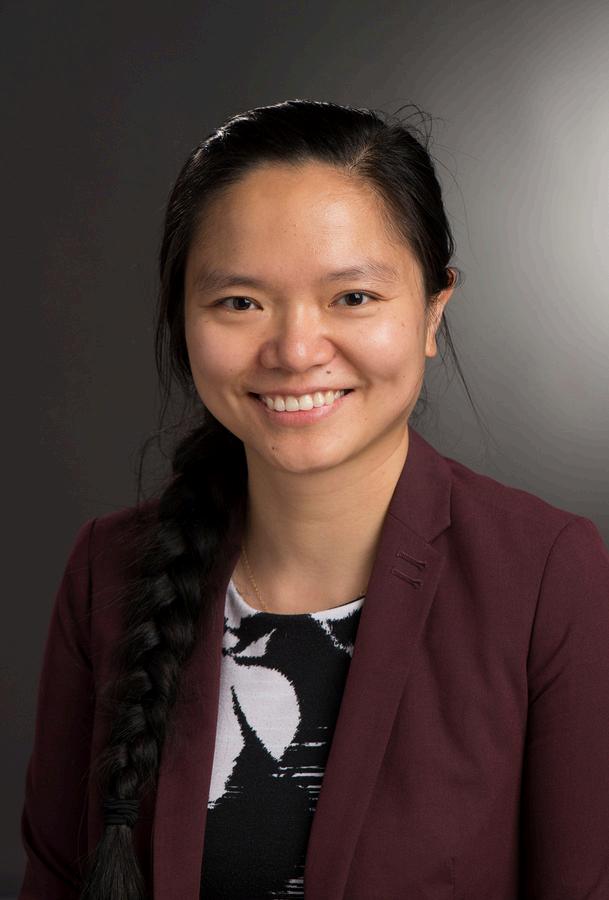

Over the past several years, multiple state and municipal transportation departments across the US have begun installing polymer concrete overlays on selected bridges and culverts to extend deck life where feasible, based on concrete condition and cost effectiveness. Two types of polymer-based products being applied in New York State (NYS) are Polyester Polymer Concrete (PPC) and more recently Hybrid Composite Synthetic Concrete (HCSC). Following mechanical and/or hydro preparation of the deck surface a ¾ inch layer of the polymer concrete is typically applied As part of the bridge resurfacing process associated with restoring rideability, the overlay is then diamond ground ¼ inch and shoulder grooves are cut in. During the diamond grinding and groove cutting, a tanker truck provides water to the process for both equipment cooling and dust control. The same tanker truck vacuum-recovers the waste from this process as a “slurry” which is comprised of ~85% - 90% water and ~10% - 15% solids The solids consist of approximately 95% sand, stone, and aggregate along with 5% of the hardened polymer cement.
Unlike Portland Concrete Cement (PCC) slurry which is currently allowed to be managed and placed within appropriate NYS transportation corridor rights-of-way or recycled back into material supplier washout systems, polymer concrete slurry must be contained, characterized and disposed of at NYSDEC permitted waste facilities. Typically, the slurry is divided into two separate waste streams. Dried polymer slurry that passes a paint filter test is generally approved for disposal as a non-hazardous solid waste. Because of trace dissolved chemicals in the slurry water, excess liquid meeting minimum solids percentage (less than 3 percent) is typically disposed of as a non-hazardous petroleum-affected liquid waste.
During the current 2024 construction season Lu Engineers, acting as a subconsultant to Hunt-EAS on a NYSDOT Hazardous Materials Term Contract, performed polymer slurry waste sampling and laboratory analysis. The sampling and analyses were completed for disposal acceptance by a municipal landfill of diamond grinding and grooving slurry generated from two NYS bridges that were applied with HCSC These two bridges were part of a three-bridge overlay contract in Herkimer and Oneida Counties.
The slurry was temporarily stored in open-top, 20 cubic yard dumpsters lined with 10 mil polyethylene. As an alternative to decanting the impacted water and disposing as a non-hazardous liquid waste, the contractor on this contract opted to utilize a bentonite-based slurry solidifier as a means to eliminate the liquid waste stream and meet the landfill acceptance criteria as a solid waste Since a recognized standard characterization associated with waste facility acceptance parameters for the polymer concrete slurry in NYS has not been established, each bridge site requires landfill analytical prior to acceptance.
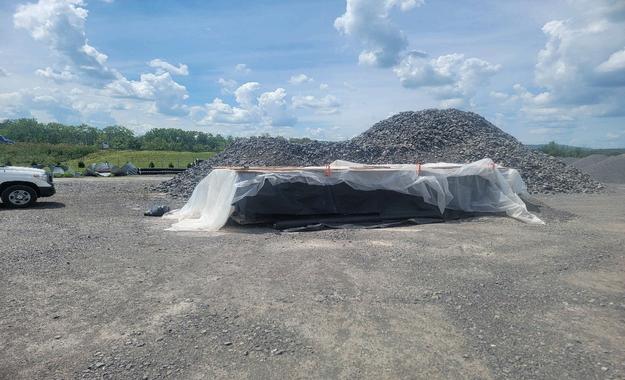
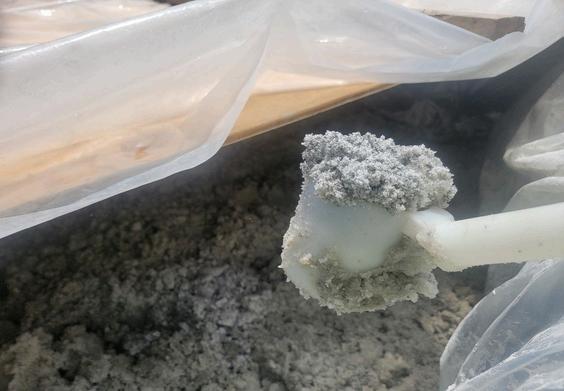
Following introduction and mixing of the solidifier into the contained slurry, the bulk material (waste) was analyzed for waste characterization by Toxicity Characteristic Leaching Procedure (TCLP) RCRA 8 metals, herbicides and pesticides, Methods 8260 and 8270 for VOC and SVOCs respectively, full TCL list compounds, Reactivity, % solids and pH TCLP results for both bridges were found to be within acceptable criteria thresholds. The solidified slurry waste also passed 2540G Total Percent Solids, and Paint Filter analysis. Waste materials generated from both bridges passed the testing and as a result, the solidified material was accepted by the municipal solid waste landfill
As state and municipal transportation departments continue to experiment with these polymer concrete bridge deck overlays and contractors continue to move toward use of slurry solidifiers as an alternative to disposing of the liquids separately as a non-hazardous petroleum-affected waste, it is possible that non-hazardous solid waste landfills may at some point start to re-think their acceptance criteria for this material The consistency of the solidified slurry is not highly desirable from a landfill placement and compaction standpoint. Currently the number and size of the polymer bridge deck projects being done around the state is limited and therefore taking up little municipal landfill space For now, landfills in NYS do not seem to have any concerns provided that the waste meets their current acceptance criteria. However, if faced with significantly larger quantities of this solidified slurry in the future, the landfills may start to limit the amount that would be accepted or outright reject it. Thus far, there have not been any known refusals by municipal or private disposal facilities since this type of concrete and slurry started being generated in New York
If disposal limitations and/or rejections were to happen at some point in the future based on increased use of these polymers, they would likely vary by landfill and directly affect project transport and handling/disposal costs for solidified slurry. Contractors may end up needing to transport material to longer distance landfills or go back to handling the excess water separately and disposing of as a non-hazardous petroleum-affected liquid waste.

As state and municipal transportation agency bridge and culvert deck programs continue to increase the use of these polymer product overlays, they will need to maintain a working relationship with their environmental consultants and state regulators on acceptable slurry treatment, handling and disposal methods Accordingly, if landfill acceptance criteria are revised or otherwise continue to develop over time, specifications will need to be updated to be reflective of those changes in a timely manner so that contractors understand what is and is not allowable prior to bidding these types of projects.







Joseph C. Lu Engineering, P.C., (DBA Lu Engineers), established in 1980, includes over 90 professionals specializing in environmental, transportation, structural, and civil engineering. Serving federal, state, and local governments, as well as many private clients and non-profit organizations, Lu is a New York State Certified Minority and Disadvantaged Business Enterprise (M/DBE), Veteran owned Professional Corporation. The firm’s headquarters are located in Rochester, NY, with additional offices in Buffalo, Syracuse, Albany, Binghamton, and New York City.
Lu Engineers’ team includes a diverse group of exceptional personnel educated and trained in a broad range of engineering disciplines. Their project managers, professional engineers, scientists, inspectors, designers, estimators, technicians, and specialists possess the range of skills and experience needed to progress engineering services on infrastructure and other municipal projects from concept through design and construction. The firm and employees are active in several professional organizations covering the spectrum of civil, transportation, and environmental engineering disciplines to ensure they remain current with industry standards, trends and regulations
Lu Engineers delivers professional engineering services inclusive of asbestos assessment, abatement design and air/project monitoring, bridge design, highway design, bridge condition inspection, construction inspection, environmental investigation/remediation, hazardous materials management, municipal engineering, natural resources, site development, stormwater management, structural engineering and water/wastewater design. Lu’s commitment to excellence is built on the experience, professionalism, and results-oriented focus of their staff Lu Engineers is dedicated to delivering quality, cost-efficient and innovative engineering solutions to each of their clients on every project assignment.

HUNT Engineers, Architects, Land Surveyors & Landscape Architect, DPC (HUNT) is a multi-disciplinary architectural and engineering firm with New York State-based offices in Albany, Binghamton, Horseheads, and Rochester, and an office in Towanda, Pennsylvania The staff totals 187 employees and ten seasonal construction inspectors. Hunt has 56 licensed professionals and 14 Principals, led by CEO, Christopher Bond, PE. Founded by Bob Hunt in 1973 in the Southern Tier of NY, HUNT's mission continues to act as “entrusted partners providing fullservice expertise that is inspired by innovation, practical by design, and community-focused.” HUNT offers a broad range of services, including architectural design, interior design, landscape architecture, MEP engineering, site/civil engineering, transportation engineering, construction management, environmental sciences, water resources, geomatics, infrastructure systems, information technology, and grant funding assistance They are dedicated to taking a personal approach to projects and have long partnered with local K-12 districts throughout the region, providing cost-effective, full-service expertise. They also have an expansive municipal and private development portfolio which includes site and civil engineering, architectural design, land surveying, and planning services. Clients include local municipalities, county and state agencies, and commercial and residential development HUNT's commitment to the corporate vision of "building vibrant communities by empowering creativity and partnership" is reflected in their long-standing client relationships and dedication to delivering highquality design and service to communities throughout the region.
This collaboration was the result of the firms working together under the NYSDOT Hazardous Materials Assessment & Remediation Term Contract in Regions 1, 2, 7 & 9


Mr. Bass graduated from SUNY Fredonia with a Bachelor Degree of Science in Special Studies – Environmental. He pursued specialty training at Harvard School of Public Health in the field of Industrial Hygiene. Mr. Bass recently joined Lu Engineers’ Regulated Building Materials Group, bringing 38 years of experience to the team. Throughout his career in the private sector and at the New York State Department of Transportation, he provided his expertise for a wide variety of environmental projects, including asbestos abatement, hazardous/contaminated materials assessment, air quality conformity, stormwater management and environmental remediation. He was also responsible for development and implementation of new and updated NYSDOT design and capital program construction guidance related to various environmental areas, supervised and provided technical assistance on hazardous waste/contaminated material issues, and coordinating site visits and inspections, as well as project specification preparation. Mr. Bass is a USEPA Asbestos Building Inspector and Project Designer.
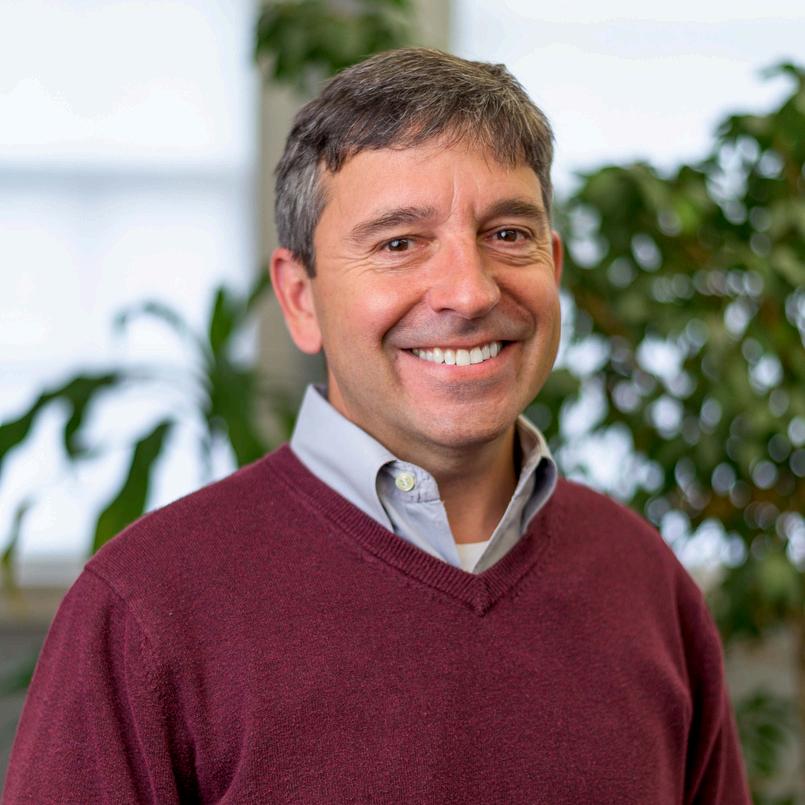
Mr. Andrus earned a Bachelor of Science Degree in Geology from Washington & Lee University and pursued graduate level studies concentrated on Hydrogeology at SUNY Brockport. He started his professional career in 1987 as a field geologist on mineral exploration, environmental emergency response and remediation assignments, and joined Lu Engineers in 1993 as a hydrogeologist and Environmental Engineer. His areas of expertise include brownfield site redevelopment, environmental permitting, impacted environmental materials management, remedial investigations, site remediation, geology and hydrogeology. Projects have included large industrial facilities, transportation corridors, multi-family housing, educational institutions, federal facilities, small commercial and retail facilities. Mr. Andrus is the Investigation Remediation Group Leader for Lu Engineers and is responsible for managing and guiding the I/R team on Lu’s projects across New York State. He is a member of the National/Genesee Finger Lakes Chapter of the Air and Waste Management Association, New York State Council of Professional Geologists, the National Groundwater Association and was former President of the ACHMM Finger Lakes Chapter. Mr. Andrus is 40-Hour OSHA HAZWOPER Certified.

James I.
PG, Director
Mr. Driscall is an environmental geologist with more than twenty (20) years of experience working in environmental consulting to protect the environment, ensuring compliance with all applicable laws, and protecting public health. Jim is a licensed professional geologist in the State of New York. He graduated from SUNY Cortland with a Bachelor of Science in Geology and from Binghamton University with a Master of Arts in Geology. Jim oversees, manages, and guides our environmental scientists regarding environmental compliance, remedial investigation, ecology, wetlands, and permitting services. Jim has experience performing both Phase I and Phase II environmental assessments, project management, and quality air monitoring. He also has knowledge of asbestos inspections as well as OSHA, EPA, and NYSDEC regulations. Jim has managed projects, which provided sampling and logistical support to transport and dispose of stockpiled slurry. Jim has coordinated sampling, characterizing, and disposal services during the mobilization/demobilization, transportation, and disposal of the collected slurry. Jim has his Respirator Certification, OSHA 40-Hour HAZWOPER certified, and is certified as a NYS DOL Asbestos Building Inspector/Designer/Project Monitor, and a EPA Lead Paint Inspector.

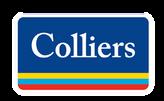
New York State, with its extensive coastline along the Atlantic Ocean, Long Island Sound, and various inland water bodies, relies heavily on hydrographic and bathymetric surveys. These surveys are essential for maritime navigation, environmental research, and resource exploration They also support municipal projects involving water crossings
Hydrography is the science of measuring the physical features of bodies of water and adjacent land. Bathymetry, a subset of hydrography, focuses on measuring sea floor depth. While the terms are often used interchangeably, hydrographic surveys map water topography, shorelines, and hazards, which are crucial for navigation and safety. Bathymetric surveys provide detailed insights into underwater topography, supporting environmental studies, geological research, and resource exploration.
In New York, hydrographic and bathymetric surveys are vital for managing diverse water bodies and coastal areas Coastal erosion, natural disasters, and emergencies like hurricanes and storm surges are studied using these surveys to understand underwater changes and support emergency responses. This information aids in post-event recovery and rebuilding strategies
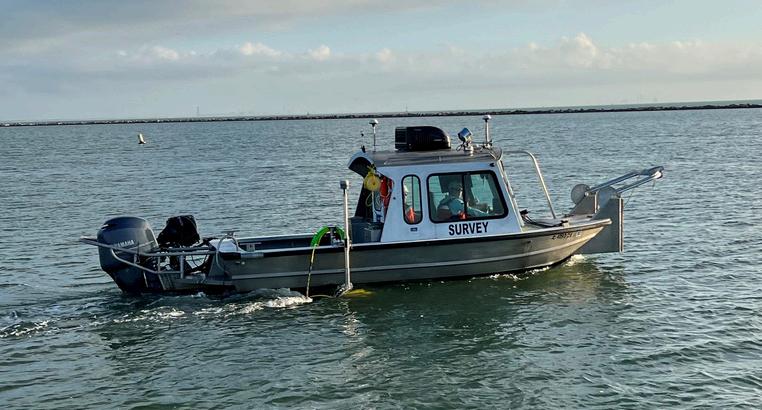
Hydrographic surveys maintain navigational safety in waterways such as the Hudson and East Rivers, Long Island Sound, and New York Harbor. Detailed seafloor mapping ensures shipping channels are at safe depths. Bathymetric surveys support the management and maintenance of ports and harbors, optimizing channel depths for maritime traffic and aiding port infrastructure planning.
As waterfront development continues, these surveys provide critical data for planning construction projects like piers, marinas, and waterfront facilities. Accurate underwater mapping ensures the stability and safety of these structures. Bathymetric surveys are also essential for infrastructure projects involving bridges, tunnels, and other water-interacting structures, helping determine foundation conditions and underwater terrain.
Hydrographic surveys contribute to environmental monitoring in New York’s water bodies. Understanding underwater topography helps assess ecosystem health, study sedimentation patterns, and monitor coastal changes, supporting environmental conservation efforts. These surveys also study aquatic habitats and ecosystems, providing crucial data for conservation measures.
New York’s water bodies offer opportunities for scientific research and educational programs. Hydrographic surveys support research initiatives, providing data for academic studies, geological research, and underwater feature exploration. Collaboration with federal agencies like NOAA ensures local data aligns with regional and national mapping initiatives.
Historically, single-beam sonar systems were used for hydrographic and bathymetric mapping. Today, multibeam sonar technology captures wide swaths of the seafloor simultaneously. In some cases, LiDAR (Light Detection and Ranging) technology, using laser beams to measure distances, enhances bathymetric surveys’ accuracy.

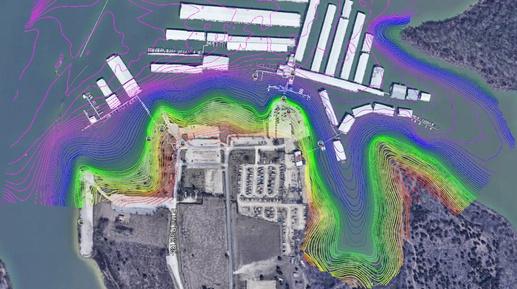
Echo sounders, releasing sound pulses and measuring the return time of echoes, are key components of sonar systems used in bathymetric surveys. GPS technology is integrated to precisely locate the survey vessel, ensuring accurate geo-referenced depth measurements for detailed mapping. The collected sonar data is processed to remove noise, and advanced software creates detailed bathymetric maps and 3D models of the seafloor, providing information on depth, shape, and underwater terrain features.
According to the National Oceanic and Atmospheric Administration (NOAA), over 80% of the ocean remains unexplored, presenting challenges to hydrography. Technologies like LiDAR and underwater 3D scanners introduce complexities in data collection and accuracy. However, with almost 40% of the U.S. population residing in coastal counties, accurate data from surveyors is, crucial for community safety.
The future of bathymetric surveying looks promising with advancements in automation, AI integration, and combined technologies. These innovations will reshape the field, expanding applications in environmental monitoring and conservation efforts. Hydrographic and bathymetric surveys are indispensable for navigating, preserving, and exploring New York’s aquatic environments.
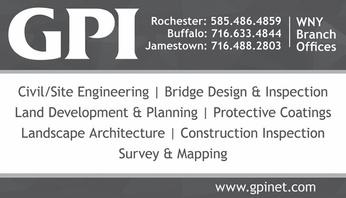

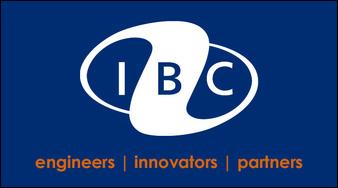
By Munther Alsudais, PhD candidate, BMECHE PhD program, Rochester institute of Technology.
Many of us have had a loved one affected by cancer You might have witnessed the sadness of the disease spreading from one organ to another. My own uncle passed away several years ago from cancer that had spread from his brain to his stomach. It left me wondering: how does cancer spread between organs? What mechanisms are at play?
Back in the mid-20th century, scientists stumbled upon tiny particles secreted by cells, initially dismissing them as mere cellular junk. Fast forward to the 2000s, and these particles now known as extracellular vesicles (EVs)—are stealing the spotlight! Researchers discovered that EVs play a crucial role in cell-to-cell communication, carrying proteins, lipids, and nucleic acids to influence gene expression in other cells These remarkable particles have since become essential for disease diagnosis and are being developed into cutting-edge targeted therapies. These nanoscale vesicles are secreted by most cells into biological fluids like saliva, urine, nasal and bronchial lavage fluid, amniotic fluid, breast milk, plasma, serum, and even seminal fluid.
Cells produce different types of EVs in a range of sizes. These include exosomes, microvesicles, oncosomes, and apoptotic bodies, each characterized by their unique biogenesis or release pathways. Exosomes and microvesicles are on the smaller side, with diameters of 20-120 nanometers (nm) and 100-1,000 nm, respectively Larger types, like apoptotic bodies, range from 1,000 to 10,000 nm, while oncosomes can be as large as 1, 000-10,000 nm (Figure 1).
To understand just how tiny a nanometer is, imagine a meter (a little longer than a yard). Now, think about breaking that meter into a billion pieces each of those tiny pieces is a nanometer!

This figure illustrates the overlapping size distributions of different types of extracellular vesicles (EVs) Exosomes have a size distribution ranging from 20 to 120 nm. Microvesicles range from 100 to 1,000 nm, while apoptotic bodies have a size distribution between 1,000 and 10,000 nm.
Focusing on exosomes and microvesicles, researchers discovered that tumor cells release significantly more exosomes than normal cells. This makes exosomes and microvesicles fantastic candidates for diagnosing cancer. However, the diversity in EV types and sizes presents challenges for researchers. The inability to separate EVs into specific subpopulations limits our understanding of their roles and potential in diagnostic applications
Enter a novel approach to isolate EVs by size! Imagine a nano-geometry membrane that selectively filters out EVs of specific sizes, allowing for precise analysis of their properties and functions. This new membrane design is used in a filtration device to isolate particles based on size (Figure 2). This novel design features a nano-pocket shape with a wide opening at the top that narrows to a smaller opening at the bottom The purpose is to capture specifically-sized EVs within the nano-pockets: smaller particles pass through the membrane, while larger ones are washed away. This new membrane design is used in a filtration device to isolate particles based on size. Successfully applying these techniques could revolutionize EV research, helping scientists answer critical questions and unlock the full potential of EVs in diagnostics and therapies. This advancement not only promises to enhance our understanding of cancer progression but also brings us closer to developing effective treatments, potentially saving countless lives.
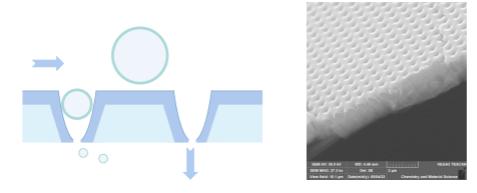
This illustration (in the left) depicts the final shape of the membrane. It shows that the top pore size is larger than the bottom pore size. Small particles can pass through the membrane, whereas larger particles are washed away. Particles that match the pore size will be captured and land within the pores, and can later be released by reversing the direction of the flowing liquid The right picture shows an actual fabricated membrane, illustrating that the top pores are larger than the bottom ones.

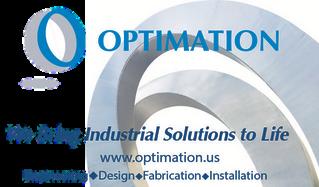


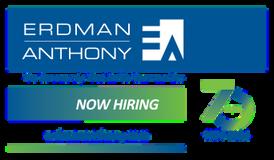



$20,000awardedtofivearchitecturestudents.
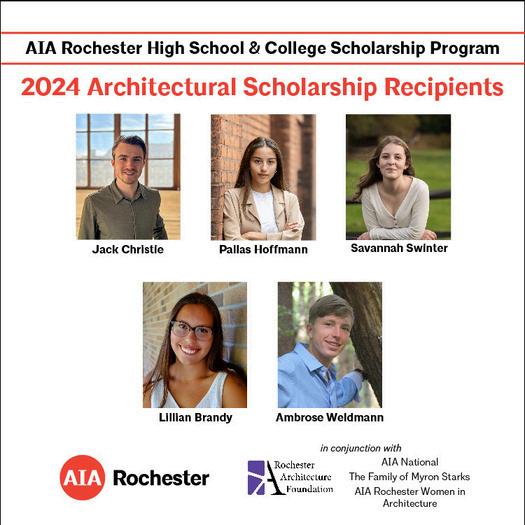
ROCHESTER, NY – June 27, 2024 – The Rochester Chapter of the American Institute of Architects (AIA Rochester) and the Rochester Architecture Foundation (RAF) have again partnered to help the next generation of architects pursue their training. Each year, AIA Rochester awards merit-based scholarships to high school and college students from the Greater Rochester Community who are pursuing careers in architecture These scholarships are given in conjunction with AIA National and the RAF, which administers two scholarships: one from the Family of Myron Starks and one from Women in Architecture. Five students were awarded scholarships totaling $20,000 this year. Jack Christie was awarded the $2,000 Myron Starks Memorial Scholarship, as well as a $3,000 AIA scholarship RAF Board Member Allen Rossignol, AIA noted, “Jack will be entering his 5th year at Alfred State and exhibits leadership that has been recognized by his professors and classmates. Jack is the current president of AIAS at Alfred State. And he is already being recognized by his peers in the profession from his internship at Razak and currently at Rozzi Architects ” Christie remarked, "These scholarships will significantly support my final year in Alfred State’s B.Arch program, further empowering me to enhance the built environment and positively impact our community.”
Pallas Hoffman earned the $2,000 AIA Women in Architecture scholarship as well as a $3,000 AIA scholarship. Upon receiving the honor, Hoffman said “The 2024 AIA Scholarship, in addition with the Women in Architecture Scholarship, will help play a large role in financing my academic career in architecture at Syracuse University. It is an honor to receive this scholarship from my hometown, and I am proud to represent Rochester within the field of architecture ” Hoffman will be entering he fourth year at Syracuse University where she is also pursuing a minor in Construction Management. She has interned at 9x30 and Passero Associates. Her colleagues say, “[Hoffman] is a valuable, productive, and joyful person to have on any project team,” and that it is rare to find someone with such a high level of enthusiasm, thirst for knowledge, and engagement
2024 AIA Rochester/RAF Scholarship Winners
McQuaid Jesuit High School senior Ambrose Weidmann received a $5,000 AIA Rochester scholarship Chairperson of the AIA Rochester Scholarship Committee Barbara Burke, Associate AIA, said, “The scholarship committee was struck by this student’s breadth of involvement as Eagle Scout, captain of the cross country team, and instructor for the National Youth Leadership Training. His inventive nature has led him to design and build an affordable foldable kayak out of corrugated plastic.” In one letter of recommendation, his art teacher referenced his “ingenious” sculptural pieces that “often incorporate woodworking, electrical elements, and kinetic mechanical parts. These pieces are emblematic of his independent thought, seemingly boundless curiosity, profound work ethic, and commitment to excellent craftsmanship ” Weidmann stated, "I’m honored to be recognized by a professional organization in the field of Architecture, one that I’ve been interested in since first grade This scholarship will help take the pressure off of me during college, allowing me to spend more time pursuing my passion.” Weidmann is headed to the University of Notre Dame this fall

$20,000awardedtofivearchitecturestudents.

Honeoye-Falls Lima High School senior Lillian Brady, set to attend Rensselaer Polytechnic Institute in the fall, was awarded a $2,500 AIA Rochester scholarship. Brady is an awarded athlete and musician who serves as a role model to younger students. Her passion for architecture led her to attend a pre-college course at Drexel University, where she “felt right at home in the rigorous studio culture,” and enjoyed the creative problem-solving. One teacher describes her as “the kind of quiet leader that brings up those around her and makes the class a better place with her presence ” Brady stated, “This scholarship will provide me with opportunities in my pursuit of a Bachelor of Architecture degree. Thank you AIA Rochester for helping to further my potential.”
The scholarship winners were recognized during AIA Rochester's Design Awards Celebration at the Historic German House on June 13. For information about this ongoing scholarship program, as well as information regarding programs available for students interested in architecture, visit aiaroc.org and follow AIA Rochester on social media.
Savannah Swinter received a $2,500 AIA scholarship. Swinter is a sophomore at SUNY University at Buffalo where she is an active member of the architecture professional fraternity, Alpha Rho Chi, which works toward the betterment of students within the school of architecture and the allied arts. She’s been passionate about the built environment since high school, when she completed a capstone about accessible design within public schools, using her own RushHenrietta Senior High School as an example. She’s continued this focus at UB, researching accessibility within architecture and its impacts on mental health. She was described by one professor as, “one of the most active, motivated, and involved students” they have had the pleasure of teaching Swinter stated, "This scholarship allows me to further my education, an opportunity I otherwise might not have had. I’ve enjoyed my freshman year and can’t wait to dive deeper into this profession."

The celebration recognizes top buildings by local design professionals.
ROCHESTER, NY – June 14, 2024 – The Rochester chapter of the American Institute of Architects (AIA Rochester) held its 2024 Design Awards Celebration on Thursday evening at the Historic German House. Seven firms garnered eight awards as selected by a jury of peers from AIA Cincinnati.
The architecture firm in.site: architecture was awarded the highest achievable award given by a local chapter, and one that is rarely given out as part of the AIA Rochester Design Awards The Autism Nature Trail (ANT) was awarded this year’s Grand Honor Award. It began as a napkin sketch at the request of three women who would go on to become the ANT Aunts. Their goal was to visualize the possibilities of a trail designed to serve those on the spectrum. That vision has been turned into an engaging one-mile-long trail at Letchworth State Park with stations that help orient visitors - especially special-needs visitors - on a sensory journey to explore nature at their own pace. The stations provide opportunities to be alone or with others with clear signposts and repeated motifs and materials The Trailhead Pavilion is the beginning and ending point - a modern yet familiar “gable” to shelter, stage, plan and prepare groups or individuals. Upon return, visitors pass through the Celebration Station portion where they can deposit their pocketed finds and leave their marks in chalk
A Design Award was also presented to in.site: architecture's buildingOUT project located in Long Island, NY. Per the architects, “A growing family made room for modern living in a historic home by identifying key needs…and then kicked those
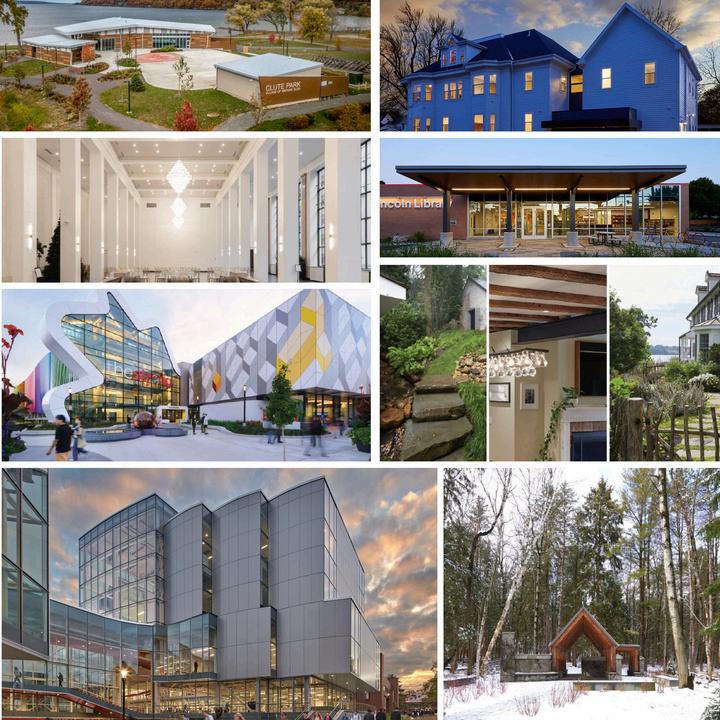
Over the centuries, two structurally distinct additions to the original 1688 house resulted in segmentation, leaving three quarters of the home rarely used. To make space for interconnected living inside the house, several program elements were evicted that now live, scattered, in the whitewashed brick structures. The landscape knitted these dispersed functions together Lushly-planted dry creekbeds became the organizing design armature, capturing stormwater that once caused flooding. De-paving, paths, footbridges, patios and gardens link destinations, facilitating indoor-outdoor living MRB Group with William Rawn Associates received a Design Award for the RIT Student Hall for Exploration and Development (SHED). The SHED, together with the renovated Wallace Library, creates a unique learning ecosystem – a creative hub with a focus on hands-on learning. Located along the “quarter mile” at the center of RIT's campus, the SHED and Wallace Library create an active destination for students and faculty from all disciplines at an important campus gateway and crossroads The SHED spotlights RIT students’ creative collaboration, revealing maker and project team spaces on three floors, dance studios, rehearsal rooms, a glass-box theater, and numerous spaces for informal group study.

Dear ASHRAE Members and Friends,
Welcome to the 2024-25 ASHRAE Society year! I would like to give a great big THANK YOU to everyone who continues to support our Chapter and being the reason why the Rochester Chapter is so great! Participation at our Chapter’s events has been increasing over the past few years and this success wouldn’t be possible without support from our membership.
Our new society president, M. Dennis Knight, has established his theme for the 2024-25 Society Year as “Empowering Our Workforce: Building a Sustainable Future”. This theme highlights the impact that our industry is making to address climate change, sustainable development and indoor air quality, the emergence of new technologies in our industry, and how ASHRAE will be instrumental in attracting and developing the next generation of diverse professionals. Click here to learn more about Mr. Knight.
Our year will begin at the ASHRAE Region 1 Chapter Regional Conference (CRC) August 15-17, hosted by the ASHRAE Northeast Chapter in Albany, NY where we’ll discuss the previous year in review and vote to make improvements moving forward. In collaboration with the Rochester Plant Engineers, our Fall Social Clambake and BBQ event will be held on Thursday, September 12th at the Genesee Valley Park Roundhouse Pavilion. This will be a fun event to kick-off the year and we expect a great turnout. Gannon Dubay, President-Elect and Program Chair is working to develop a line-up of technical presentations for the year that will prove to be very informative and relevant to the current built environment. Be on the lookout for updates to our events calendar.
I would like to thank every one of our officers, board and committee members for their commitment to our chapter and their volunteerism. For a full list of our team, please visit our chapter’s website www.rochesterashrae.org. With that said, I would like to share that we are actively searching for more volunteers to join our committees to help do great things for our Chapter! Please reach out to me or anyone on our board if you’re curious about getting more involved or have any questions regarding ASHRAE. I look forward to seeing you all at our event in September!
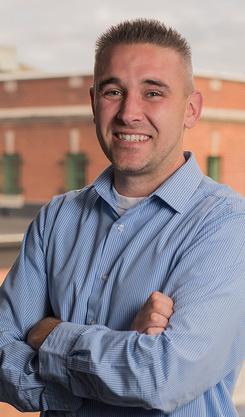
Bret Fryover
ASHRAE Rochester Chapter President, 2024-25



Officers & Societies
Cristiano
Bo
Cristian
Jamison
Christine
Howard
Mark
Bruce
Greg Gdowski
Dear Colleagues,
Our IEEE Rochester Section Executive Committee (ExCom) meets monthly to plan events. Our next ExCom meeting will be on Tuesday, September 2nd from 12:00 PM to 1:30 pm. Please feel free to register for in-person or virtual attendance at our next ExCom meeting using this link (https://events.vtools.ieee.org/m/427166).
When asked why I am an IEEE member, I replied that my membership is the “lab course” for career building My membership has opened opportunities for me to learn and sharpen technical and soft skills, such as organizing and hosting events that elevate engineering practice and contribute to our community. Help us plan events, welcome students back for the Fall Semester, engage practicing engineers, and elevate your career.
I look forward to working with you!

Kelly Robinson, PE, PhD Chair, IEEE Rochester Section

Lynne Irwin, who has 42 years of exemplary service to the Rochester Engineering Society, was celebrated at the RES annual meeting. The photo shows Lynne with outgoing RES President Michelle Sommerman, PE, who pointed out that Lynne could never be replaced by a single person but is being replaced by an entire organization, ROBEX. Each month since the 1980s, the editors of this newsletter have worked with Lynne to publish it in the RES Magazine. She’s already missed. Besides putting together the RES Magazine in print and digital form, her work touched every aspect of RES’s professional and educational events, including planning, onsite logistics, and registration.
Sreeram (Ram) Dhurjaty, PhD, IEEE R1/R2 Co-Historian and Milestone Coordinator, will give a talk on Radio-frequency alternators in the 1920s at the Antique Wireless Association annual meeting at the RIT Inn and Conference Center. Ram will discuss the Poulsen-Dudell arc alternator, the Goldschmidt Alternator, the Alexanderson Alternator, and other devices that could generate frequencies up to 400 KHz and 500 KW. The AWA conference runs from Oct.1 through Oct 5, 2024 For conference details and registration, see: https://www.antiquewireless.org/homepage/annual-conference/

Annual Hybrid Meeting, September 2024, 1 PM at Cornell University
Feature Presentation:
Keeping People First in the Smart Cities Enterprise
Presented by Matthew Hause
Principal systems Engineer at SSI, former PTC Fellow, Co-chair of the UAF group and a member of the OMG SysML specification Team
Abstract:
Abraham Lincoln in his Gettysburg Address spoke of “government of the people, by the people and for the people.” The INCOSE Smart Cities Initiative (SCI) is proceeding along these lines to support municipal governments in considering people first for smart city efforts. This Initiative will support municipalities and public agencies in adopting Smart Cities technologies by applying systems engineering principles and tools. This Initiative will support holistic development of Smart Cities infrastructure and Concepts, Applications, Technology and Services (CATS) through an open framework. Their initial set of models and metrics focused on the people and communities to deter mine how a smart city can improve life for its residents. Towards that end, a modeling initiative using the Unified Architecture Framework (UAF) was created to put the human at the center of the socio technical system. The model looks at a city as an enterprise to examine the organizations, people, and communities using the human factors set of views. As a city of any size is a complex system of systems, the initial model is focused on Homeless/Unhoused People, how they interact with other organizations and people in the community. Only once this is understood should architects and planners explore technical solutions and how to improve outcomes for both them and the city. This paper will briefly discuss the SCI and its goals, and then show how MBSE can help planners understand the problem before looking for solutions.
This meeting will be on Saturday, September 7th, 1:00 – 3:00 pm (eastern). Attendees can attend via zoom or in person at Cornell University. The session will be recorded for INCOSE members to view later.
Attendees need to pre-register. To register, send an email to Susan.Urban@incose.net. The zoom link will be sent out a few days before the meeting. Please indicate if you are interested in attending in person or virtually for further details.
IF YOU HEARD ABOUT THIS MEETING FROM RES, PLESASE LET SUSAN URBAN KNOW.
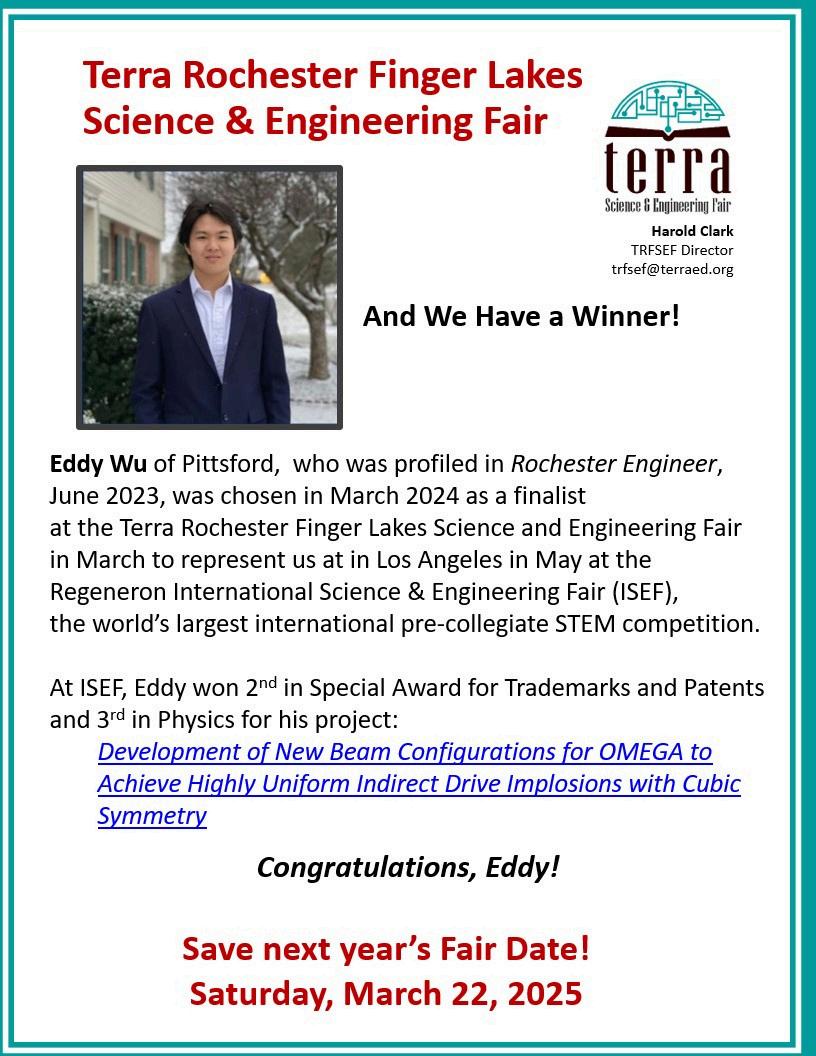
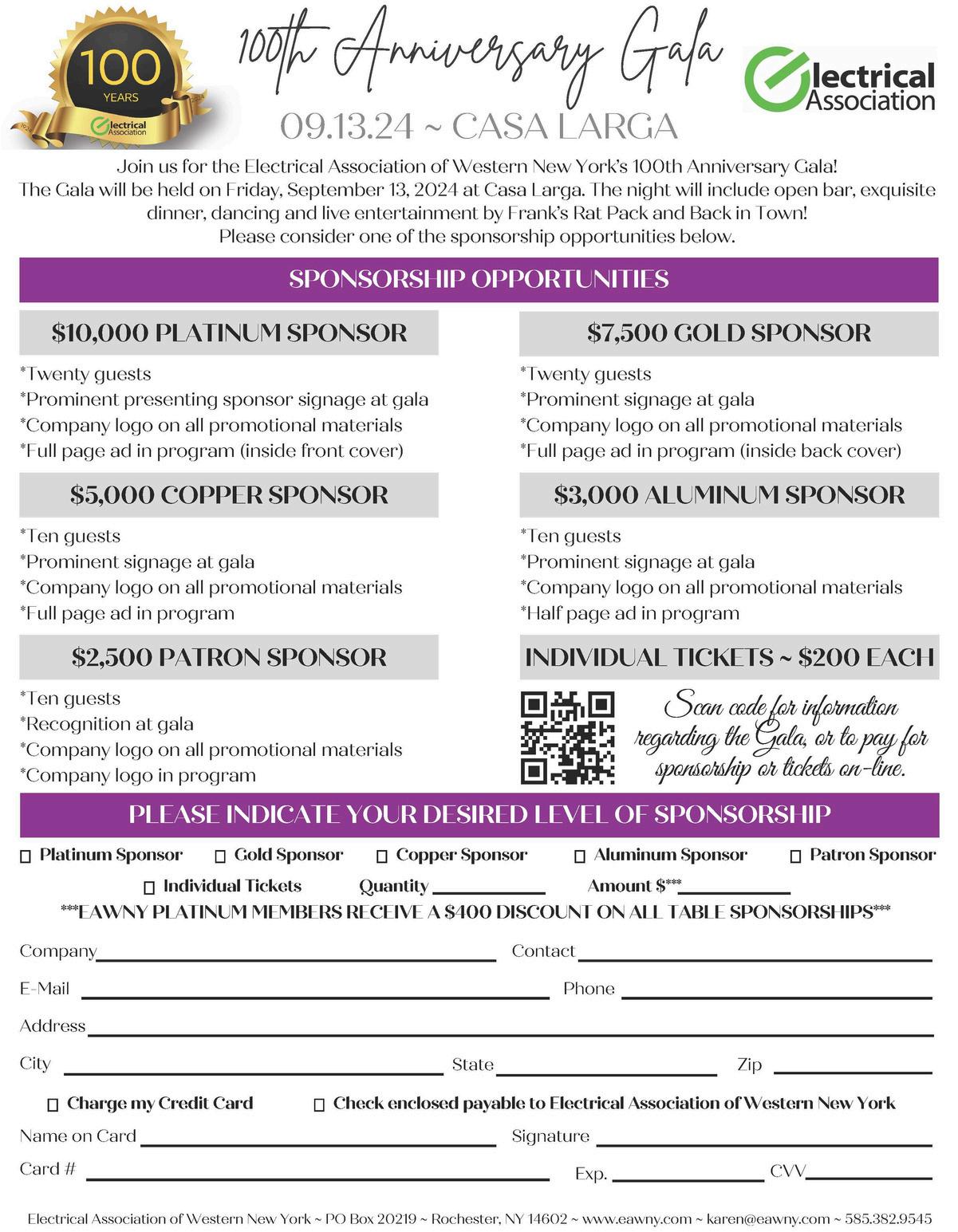

Innovative Technology Leader to Drive Digital Transformation
Albany, NY – CHA Consulting, Inc. (CHA), an innovative, full-service engineering, design, consulting, and program/construction management firm, has named Jeff Netland as EVP & Chief Digital Officer effective June 3, 2024. With over two decades of leadership across multiple Fortune 500 organizations, Jeff brings deep expertise and leadership in driving organizational growth through advanced technology applications and development. Jeff brings a proven track record of successfully aligning business strategies with modern digital initiatives, that stimulate growth, deliver operational efficiencies and client value.
In Jeff’s role as Chief Digital Officer, a newly created role at CHA, he will have overall responsibility of the technology and digital ecosystem. Jeff's background includes most recently serving as Chief Technology Officer & Vice President of Engineering for Carrier Fire & Security, where he led global engineering teams and implemented value engineering initiatives that drove annual revenue growth, reduced direct costs and improved global team productivity. His experience in digital solutions and engineering also includes various leadership roles at Ecolab, Honeywell, and General Electric, among others. Jeff will serve as a key member of the executive leadership team reporting to CEO, Jim Stephenson, and work across CHA’s business lines to further advance digital enablement.
“We are thrilled to welcome Jeff to CHA as we accelerate our digital capabilities to better support our teams in developing best-in-class solutions and serve our clients. Jeff’s expertise in advancing technology initiatives, driving business efficiencies, and proven experience in next-generation product development and delivery, will be pivotal in shaping CHA’s future during this time of digital transformation.” said Jim Stephenson, CEO, CHA Holdings.
“Joining CHA at this exciting time of rapid advancement in technology, particularly in AI that is changing the landscape in the A&E industry presents a truly unique and challenging opportunity,” said Jeff Netland. “I look forward to collaborating with CHA’s teams and leadership to continue to identify opportunities to become a leader in digitally enabled solutions and leverage the investments CHA has already made in its IT infrastructure and commercial applications
Jeff received his Master of Business Administration from the University of Utah and his Bachelor of Science in Engineering from North Dakota State University.
CHA Consulting, Inc is an innovative, full-service engineering, design, consulting, and program/construction management firm providing a wide range of technology-enhanced services to public, private, and institutional clients. We are focused on delivering sustainable, integrated solutions to the world's most challenging infrastructure projects across utilities, transportation, water, and other critical commercial and industrial endmarkets. CHA was ranked 65th largest engineering firm in the U.S. in 2024 by ENR, with over 1,800 employees and 55 offices throughout the U S and Canada; please visit www.chasolutions.com

American Consulting Engineering, Companies of New York President, Pat Nicoletta, PE

American Public Works Association Monroe County/Genesee Valley Branch Chairman, Peter Vars, PE

American Society of Civil Engineers, Rochester Section President, Tyler C. Burke
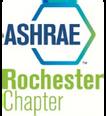
American Society of Heating, Refrigerating, and Air-Conditioning Engineers, Rochester Chapter President, Matt Kremers

American Society of Mechanical Engineers, Rochester Section Chairman, Berto Perez

American Society of Plumbing Engineers, Rochester NY Chapter President, David Myers
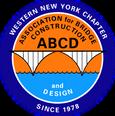
Association for Bridge Construction and Design President, Emily Smith

Electrical Association Executive Director, Karen Lynch

Genesee Valley Land Surveyors Association President, Matthew Palmer

Illuminating Engineering Society of North America Inc., Rochester Section President, Steven Galley

Imaging Science & Technology, Rochester Chapter President, Bruce Pillman

Institute of Electrical and Electronics Engineers, Rochester Section Chairman, Kelly Robinson

Institute of Industrial and Systems Engineers, Rochester Chapter President, Dr. Ehsan Rashedi

International Council on Systems Engineering, Finger Lakes Chapter President, Teresa Fronk

Monroe Professional Engineers Society President, William Grove
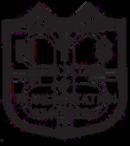
New York State Association of Transportation Engineers, Section 4 President, Christopher Reed

Rochester Plant Engineers President, Brian Laurer

Sheet Metal & Air-Conditioning Contractor’s National Association Rochester, Inc. Executive Director, Don Fella

Society of Plastics Engineers, Rochester Section President, Brett Blaisdell
